#the wiki page calls them stranger's inhabitants
Text
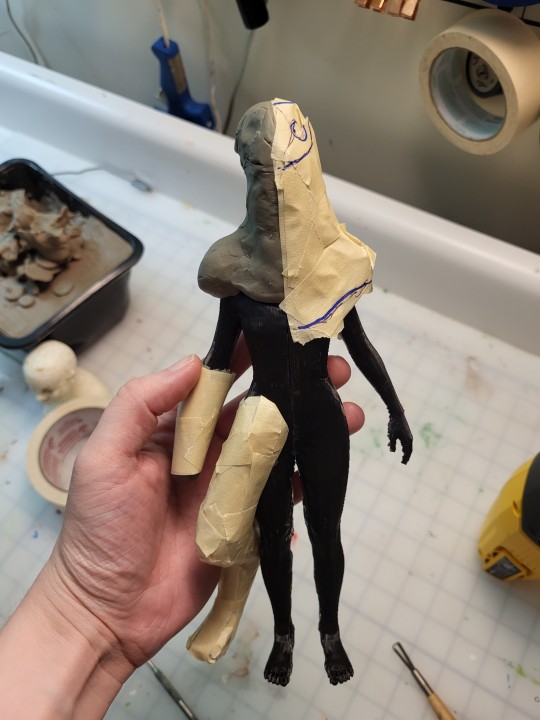

It's at the "mostly inscrutable mad science" stage of the planning phase, but I'm finally starting on a new cosplay build!
Starting off by sculpting the forms I want onto a figure that's 1/8 my size, and also making some clothes mockups out of paper napkins I had lying around. Once I'm more or less happy with the shape of it all, I'll pull flat patterns from the tape and napkins, blow those patterns up to 800% size, and use the enlarged patterns as the starting point for the real, human-sized crafting!
#ragsycon exclusive#ragsymakes#ragsycosplay#the problem is: the character I'm making has no official name#the fandom calls them owlks#the wiki page calls them stranger's inhabitants#the game files call them ghost birds#I'll probably go with owlk for brevity's sake#outer wilds
36 notes
·
View notes
Note
What do you think of Homura's epiphany in MSMM's rebellion ? (the scene where she turns into a witch, you may find it on YT by searching 'Homura turns into a witch' if you don't see which scene I'm refering)
Hello anon!
I don’t have particular thoughts on that scene since I think it is pretty clear in what it wants to convey.
Homura realizes that the witch she has been hunting is nothing more than herself and as this realization sinks within her, the same happens to the viewer who starts seeing clocks (aka symbols linked to Homura) everywhere and the city (aka the lie Homura had created) dissolving in flames (which are another call back to Homura’s name).
The bus Homura is in conflagrates and the clocks all ring when Homura’s suspicion is confirmed. In short, the world created by Homura mirrors her own feelings and state of mind. Up until she was ignorant the fake city kept working, but the moment she realizes the truth it shows its true colors and Homura’s witch form makes her entrance.
Witches give information about a magical girl’s interiority and Homulily makes no exception. What she symbolizes is explored in the witch’s wiki page.
Generally speaking there are many references to death and grief.
First of all, Homulily keeps repeating her own execution and her servants are her funeral procession.
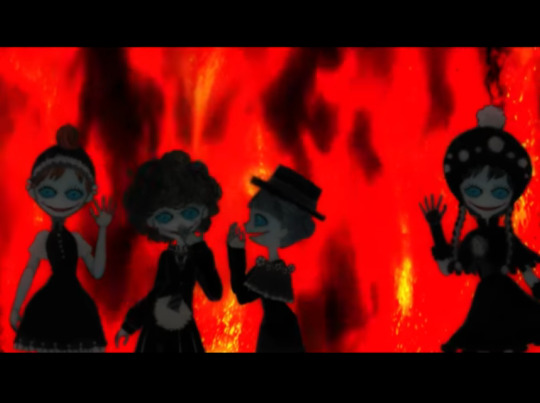
However, the so called “children of the fake city” are faking their tears and each one of them is called after a negative trait Homura is convinced to have. It is interesting that the last one called love is said to never appear. This has probably to do with Homura feeling that she does not deserve to be loved.
The red spider lily as well is a flower often associated with grief and death and a bunch of lilies appear when Homura realizes that she is a witch. Moreover these flowers can be contrasted with the white ones which appear in the field where Homura sits with Madoka:
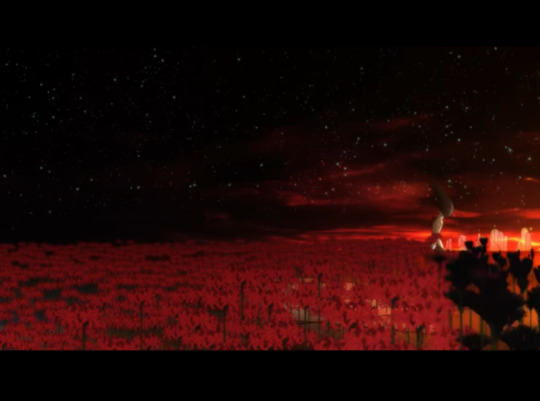
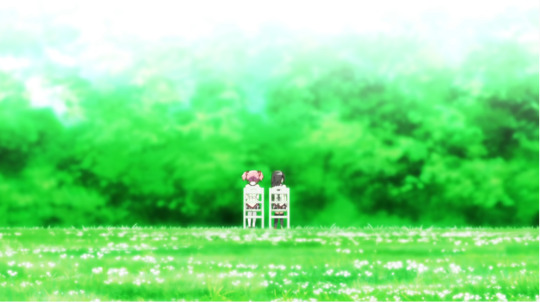
What is more, spider lilies emerge from Homulily’s skull:
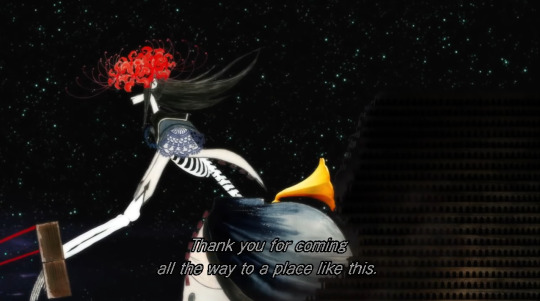
I am quoting the wiki:
A promise is the only thing that pitifully planted in that head which can no longer crack any nuts, but within the husk of the awakened witch is the distinct form of a magical girl.
The promise which was planted in that head is the vow Homura made to protect Madoka. The fact that it is such a flower the thing which symbolizes said vow is interesting because it shows once again how it is something born from Homura’s grief over her friend’s death and how with time it has become her fixation to the point that it completely took over her head.
The witch being compared to a nutcracker highlights another motif Homulily is associated with aka Nutcracker, the ballet. As the wiki says:
In the story the nutcracker was once a human who was transformed into a nut cracker and later given as a gift a Christmas party where he was damaged, the girl felt sad for him and took care of him, then when the mice attacked he came to life and defended the girl. Similarly Homura started out as a normal girl and was held back by her heart condition, then she befriended Madoka and the others and became a Magical Girl and grew stronger with the intent of protecting Madoka; which would be similar to the role reversal in the ballet. However since Madoka died in most of the timelines until she finally ended up as a part of the universe, Homura could see herself as still being the damaged nutcracker doll who can’t protect the girl who helped her or even fulfill her most basic purpose.
This interpretation is strenghtened also by the fact that some of Homulily’s servants (Luiselotte) are meant to hunt white rats like the one in the Nutcracker’s story. It is clear who Homura considers the rat in her story:
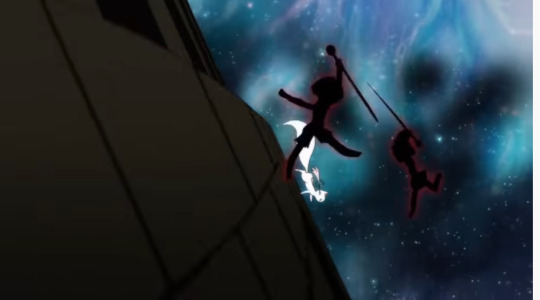
Homulily being associated with a useless nutcracker explains also the teeth associated with this witch. As a matter of fact nutcrackers are used to break nuts, so that they can be chewed easily, but since Homulily is a broken nutcracker teeth decay and fall because they try to chew what they can’t. At the same time dreaming of a broken or fallen tooth means that a relative or a loved one will die soon, so they too are symbols of death and grief. In a sense the teeth are the deaths Homura was not able to avoid because of her being useless (to be clear, I don’t think Homura is useless; this is just how she perceives herself).
Finally Homulily’s hat resembles a record which becomes broken once the witch is beheaded. The hat falls and is later splashed by Homulily’s own foot. After this happens Homulily’s cry where she thanks Madoka and apologizes to her starts in a broken voice and it is as if it is being broadcasted by the grammophone on the witch’s back.
The idea of associating Homulily to a broken record together with the witch repeating her own execution again and again is perfect to convey Homura’s story. As a matter of fact Homura kept repeating the same month in order to save Madoka, but she failed. In a sense it is as if Homulily wants to die as many time as Madoka did.
These are the main motifs and symbols associated with Homura’s witch form, but the scene you asked about has also other segments other than the ones where the witch and her servants appear.
First of all there is the one where Homura and Madoka are sitting together in a field of white flowers:

Homura sees Madoka fall and moves to stop her, but fails. While she does so she leaves her old looks behind and acquires the appearance she has in the original series. In short this segment symbolizes Homura’s development and her becoming who she is because of her attempts to chase after Madoka and to “catch” her before it is too late.
Let’s also underline that Madoka’s position resembles a crucifix and so it might be a reference to Jesus Christ which would fit given the fact that she has become a Goddess to save all magical girls. Either way, it is clear that Madoka’s fall represents her sacrifice and how Homura perceives it as Madoka slipping away and disappearing.
After she fails to catch Madoka Homura is surrounded by a group of old versions of herself who look at her with contempt:
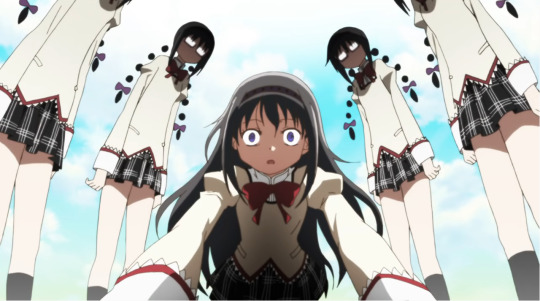
This symbolizes once again Homura’s self hate and how in a sense she has deluded the girl she once was and who started her journey motivated by the wish to protect Madoka. In the end Homura was not able to succeed in her mission and she has grown to resent herself for this.
This is why immediately after a bigger version of herself is shown punching and destroying the whole scene in frustration:
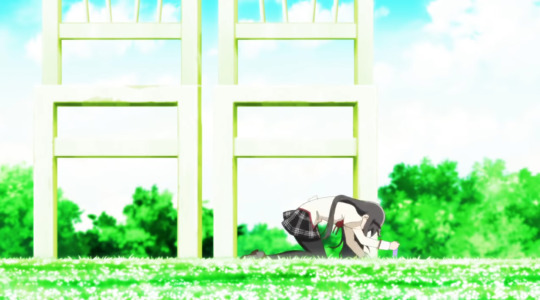
At the same time, despite this Homura being bigger, she is far smaller than the two chairs Madoka and Homura were sitting on. This shows that how much more powerful Homura becomes doesn’t matter because she ends up feeling more and more powerless.
After this, Homulily appears and Homura describes the feeling of being a witch with all the emotions coming back to hunt her and her not being able to remember anything if not fragments of light and regret. She also comments that this is her despair and while she does this image is shown:

This is Homura’s wish to have Madoka in a safe place. Let’s highlight that this picture perfectly shows what Homura will do in the end aka closing Madoka in a golden cage where she is safe, but trapped (stuck in a closet) and where she can’t grow (the Madoka in the picture has childish connotations like her red ribbons and a plushie; moreover she is in a bed as if she is about to sleep).
At this point Homulily is beheaded and what I described above as the witch’s broken cry is broadcasted.
Finally the focus shifts from the witch’s pompus funeral to a small salamander who cries while saying that she is sorry she could not say goodbye to Madoka:
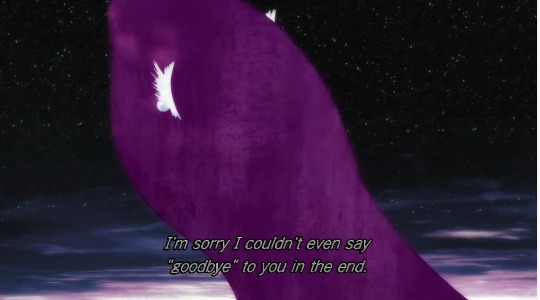
The salamander is an animal believed to be able to survive in the fire. She is associated with Homura probably because her name can be read with the kanji of flame. This little animal closes a scene which started with the labyrinth catching fire because of Homura’s feelings. In a sense, it can be considered the perfect inhabitant of such a place and a good representative of the girl who has such strong emotions.
Of course the salamander can also be seen as foreshadowing of Homura’s rebirth as a demon since the salamander like the phoenix is considered a creature who can be reborn from its ashes (and can be a symbol of Jesus Christ as well). At the same time it used to be associated with witches and Homura is currently one.
However, I think that deep down the salamander represents Homura’s strong sadness and loneliness. All she wishes is to see an important person one last time and she is far away from the ceremony organized to celebrate the witch’s execution. It is as if the scenery behind her is something of no concern for the salamander which is a stranger to her own funeral.
Thank you for the ask! I hope I was of help!
#pmmm#homura akemi#madoka meta#puella magi madoka magica#pmmm meta#puella magi madoka magica meta#asksfullofsugar#anonymous
80 notes
·
View notes
Text
Oil and Water: An Obito Uchiha Character Analysis
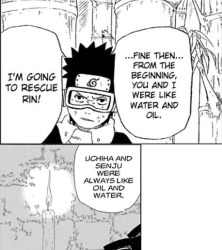
The following are my scattered thoughts on the layout and progression of Obito Uchiha's character.
I’ve previously posted this a while back on a forum like a year ago but found that I wanted to share with a wider audience, if I should be so fortunate.
With that out of the way, here we go. And warning, it’s quite long.
----------------------------------------------------------------------------------------
The first lesson Team 7 had to learn as shinobi was teamwork. They initially all fought for their own self-interests, which prompted Kakashi to tell them about the memorial stone.
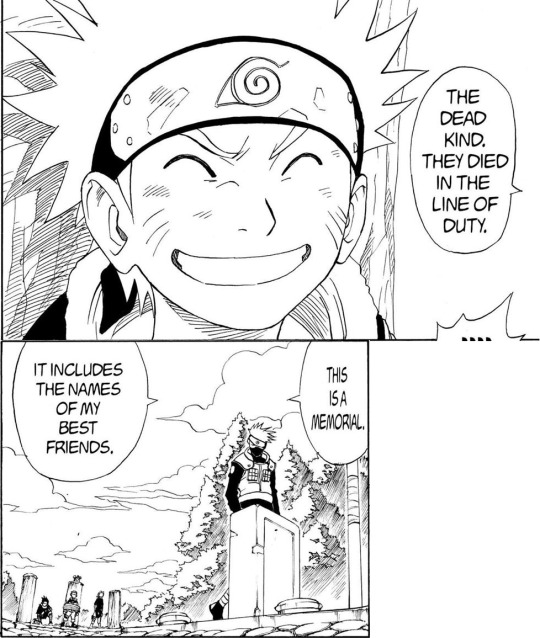
Later, once Sasuke and Sakura sacrifice their food for Naruto, Kakashi unexpectedly passes them and reveals to them his philosophy in life.
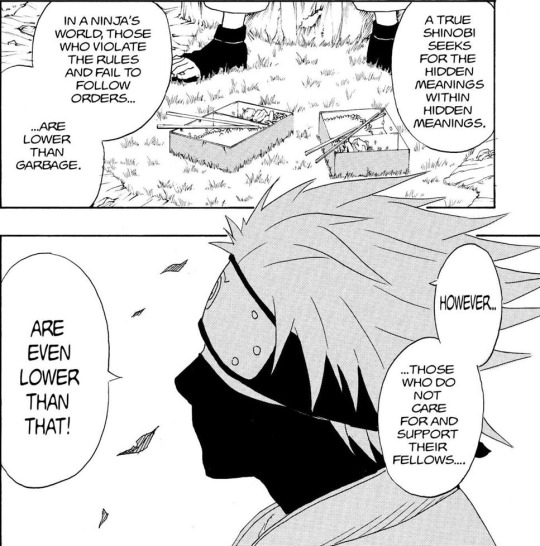
His mystery is further compounded with the reveal of his Sharingan, as well. Kakashi is built up as a man of mystery throughout Part I, and after the Third Hokage's death he is shown mourning at the grave of someone called Obito in a very somber scene.

(Note that the chapter in which Obito's name is first mentioned is the chapter in which Akatsuki first shows up. Likely coincidence, but interesting nonetheless)
So, tons of shit happens, and the darkness in Sasuke grows. He eventually abandons Konoha to join Orochimaru. The cast is left crestfallen after his betrayal, with Naruto promising to bring him back no matter what. The chapter in which this resolution occurs, releasing shortly before Kakashi Gaiden, starts off with this:
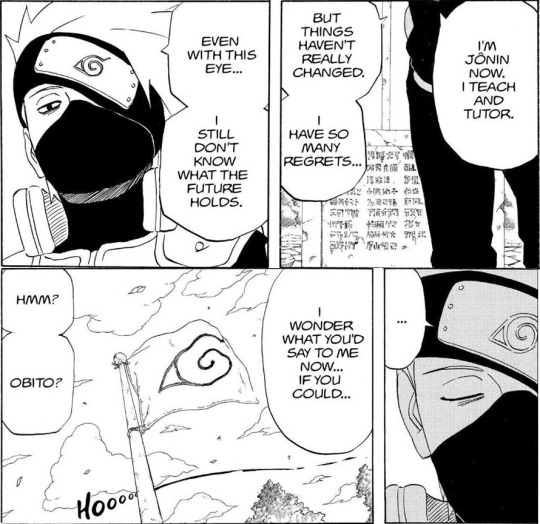
The remaining pages revolve around Naruto's conviction to keep his promise to Sakura, and about comrades who have fallen into darkness. I hindsight, this was effective and subtle foreshadowing for Obito’s role to come.
Next, immediately sandwiched between Parts I and II, we have the Kakashi Gaiden, revealing the character of Obito for the first time and showing his role in shaping Kakashi's life.
Obito's character, from beginning to end, centered around the themes of injustice and cherishing one's comrades.
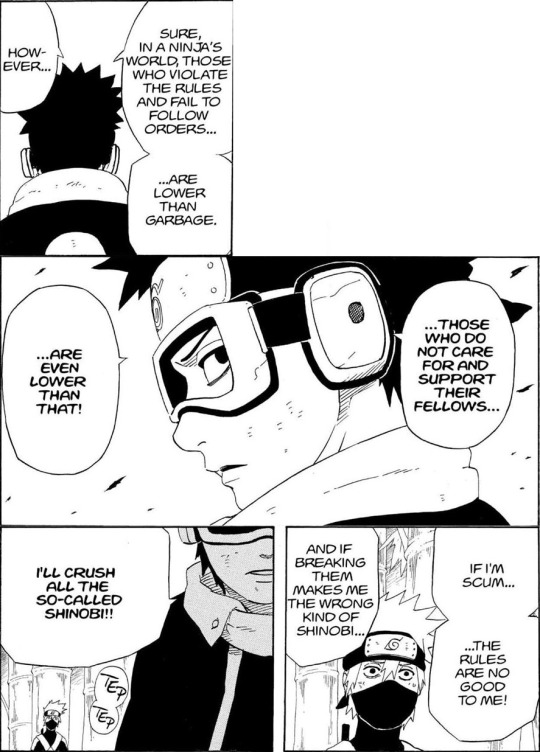
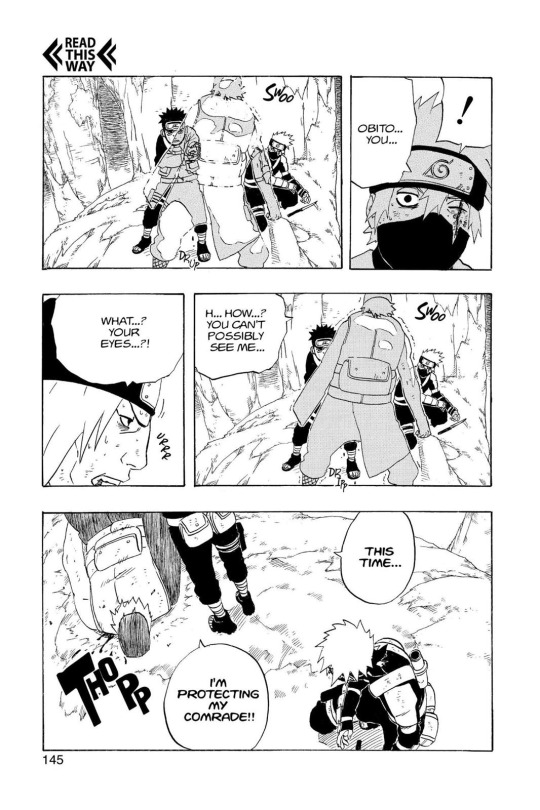
He not only vowed to "crush" the shinobi that diverged from his dogma, but he was able to gather the resolve to kill someone in order to protect Kakashi (this was likely his first kill).
At this point, it is of course important to touch on Obito's love for Rin Nohara. Obito was a kindhearted Uchiha with big ambitions to be Hokage and end the war. But among the prestigious Uchiha clan, he was a washout. A disappointment. For a long time his only real support was Rin, and so he became attached to her.
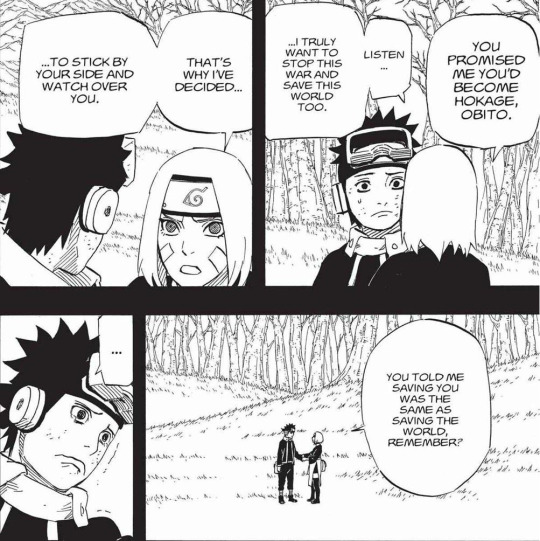
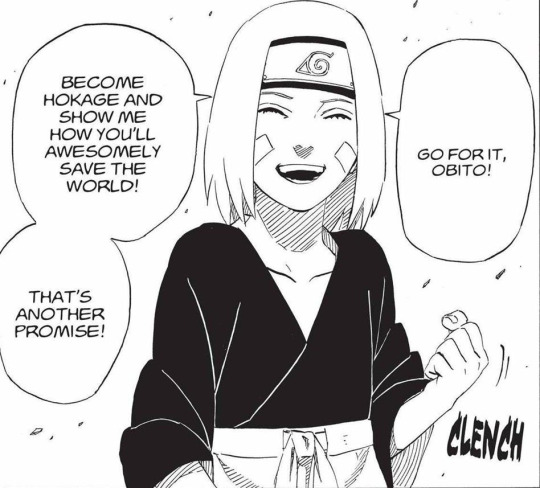
Obito's insistence on rescuing Rin in the Gaiden was not, however, just because of his feelings for her. They played a role, but she was also a comrade of his, much like Kakashi. They did, however, play a larger role in his request to Kakashi. Obito ended up being smashed by boulders in the process of saving Kakashi. The two had formed a bond by then, so he entrusted his eye to Kakashi, telling him they would "see the future together". Even though he had been very mature throughout this experience, however, Obito was still a child at heart and told Kakashi to protect Rin at any cost.
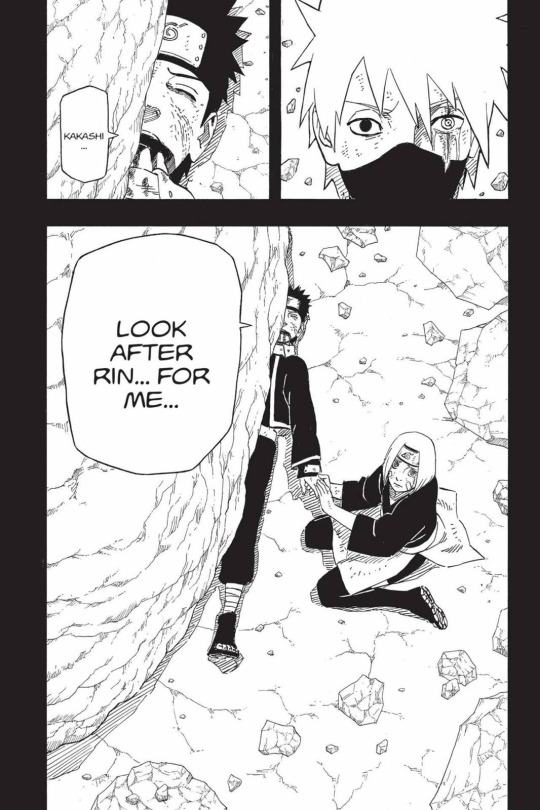
Now, it’s very important to note Obito's last thoughts before being supposedly killed.

His most desperate wish is to survive so he can spend more times with the people he cherishes, which will become his main drive when rehabilitating in Madara's cave.
Afterwards, a battle ensues and Kakashi moves to protect Rin. He later wakes up with Minato sitting beside him, and wonders if he survived.

However, he was not the only one to survive. Obito found himself in a very similar, but less fortunate situation:

He awakes in an underground cave with Madara Uchiha. He is relieved to be alive, but is constantly driven by the desire to return to his comrades and protect them with his newfound power. Madara reacts to this by telling him his hopes are futile and reality is cruel.
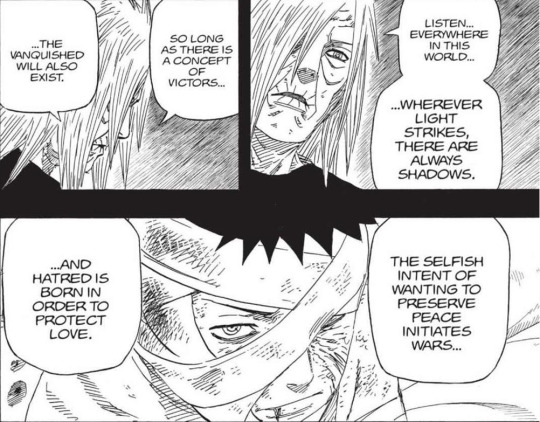
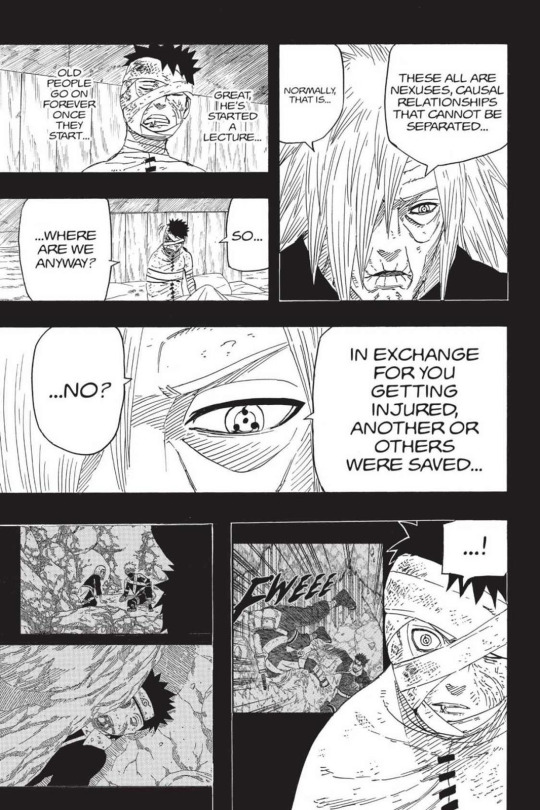
But Obito, of course, would not pay heed to this until much later.


The only thing giving Obito hope and strength during this drawn on underground recovery, with half a body and surrounded by strangers and pessimism, is the thought of returning to his comrades. That thought is what keeps him going during his time spent down under.


Obito's most prominent trait for a while now has been hope. He's put all his being into reuniting with his comrades and escaping from this creepy geezer. But the reality ended up being far harsher.
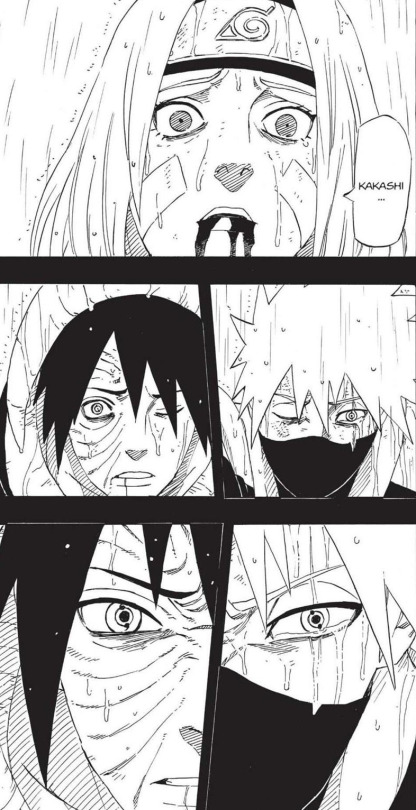
Obito's entire world was shattered in this instant. The power he had entrusted to his newfound friend Kakashi to protect Rin was robbing her of her life (Obito’s Sharingan perfected Kakashi’s Chidori). Not only did Obito lose the one he loved, but his view of the world was shattered. All his hopes were crushed in that instant. But what happens here is one of the key differences between Obito and Madara. Obito does not lose hope in the world; he denies that he has it. He refuses to accept the reality before him.
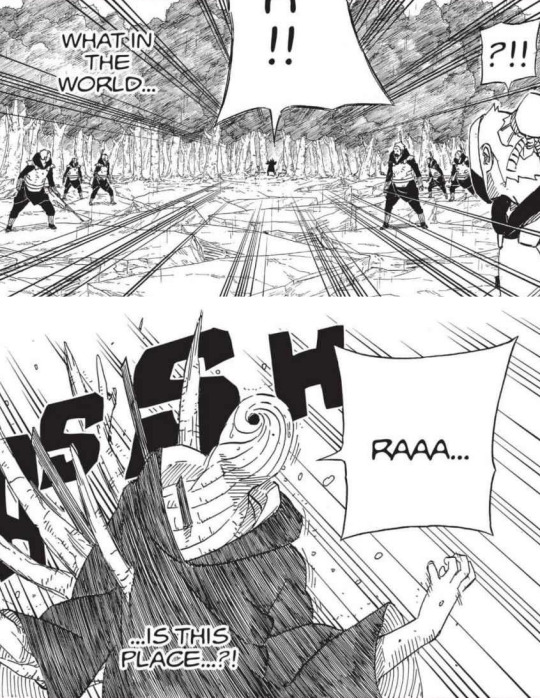

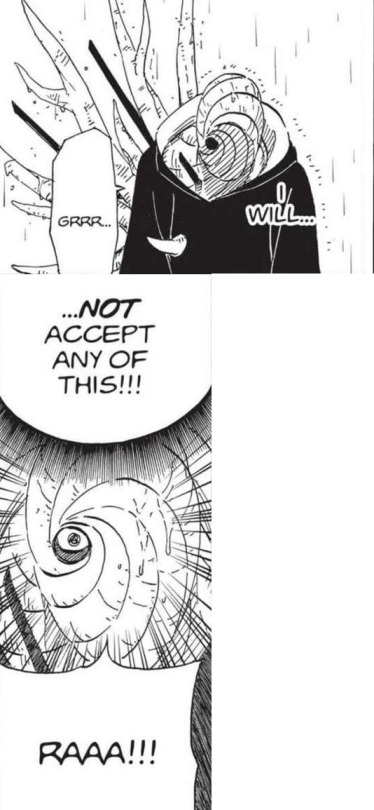
Obito was in an unfamiliar place in unfamiliar circumstances, and his life just fell apart before his eyes. His immediate response is to reject what he sees. In contrast, Madara slowly but surely lost hope in the world over time. He accepted what the world was (or rather his perception of it). Obito couldn't. He never developed, or had time to develop, the mental state for it.


The person he loved most was killed by his best friend, and all his efforts had proven useless. Unlike Naruto, Obito was alone, and the people he did have, well it's self explanatory what happened there. Obito from this point on started operating in the shadows towards the completion of Madara's plan.
Obito's general persona from this point on slowly becomes more detached and warped. He gains a sarcastic/sadistic bend to his personality and becomes increasingly divorced from reality, as he has abandoned (or rather surpressed) his hope for the world.

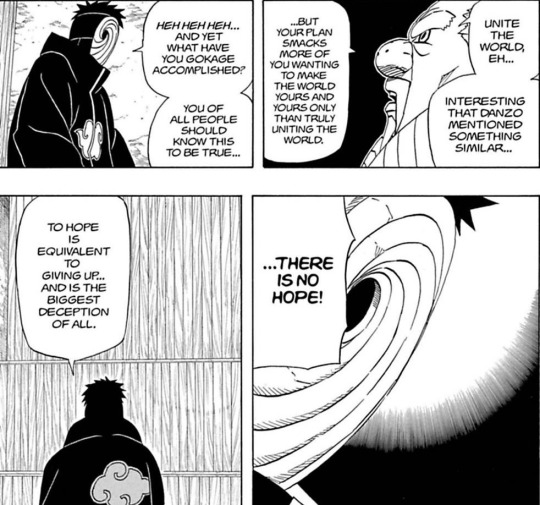
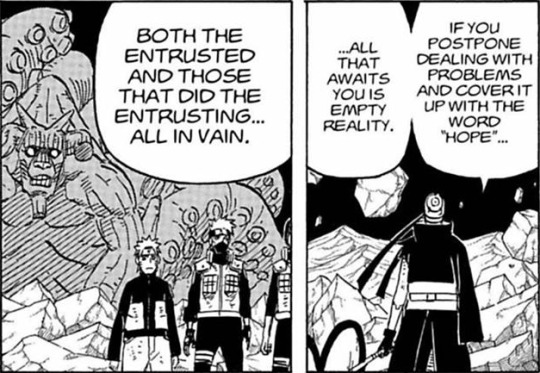
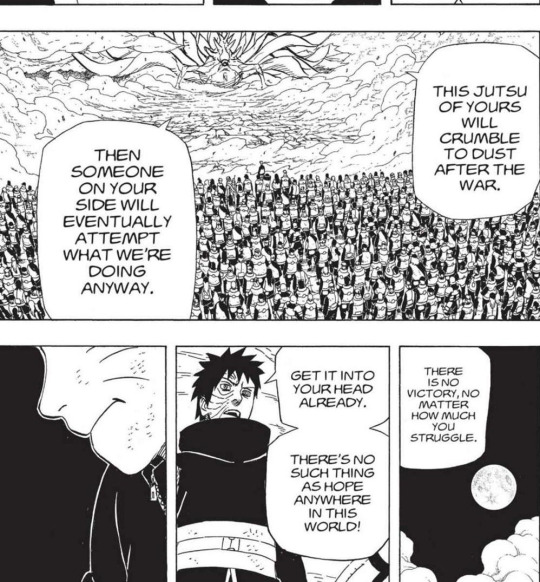
He still is fixated on and values camaraderie, but it's not in the same way he did before. It's more self-serving now.
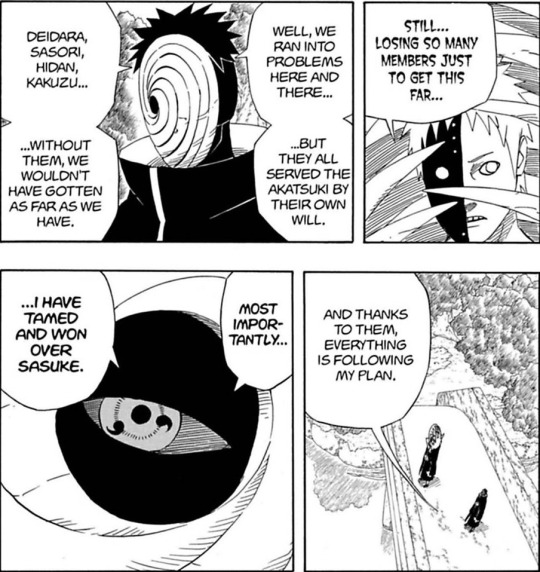
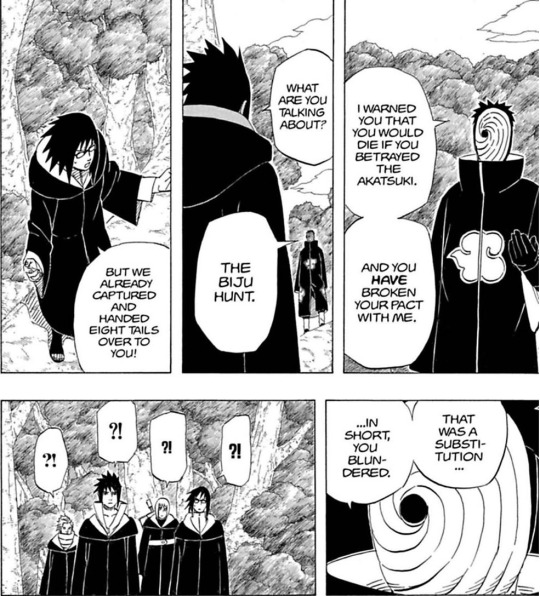


He values loyalty, so long as it's loyalty to him. However, when double-crossed he will be merciless.
The seeds for this were planted earlier though, albeit in a more innocent form.

This is an important divergence from Madara, who didn't really care about the loyalty of his comrades so much as their usefulness to him. As seen by him giving no shits when learning of Nagato's betrayal and not caring about Obito having his own plans either.

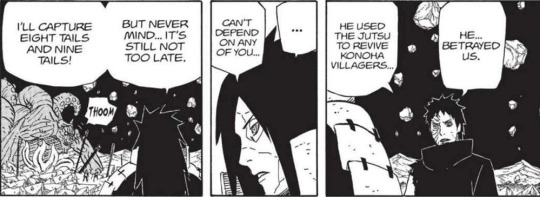
Obito's also become quite deluded by this point, choosing to consider the real world and its inhabitants "fakes" and the Mugen Tsukuyomi world to be "truth".
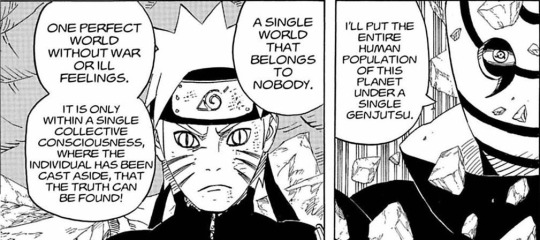
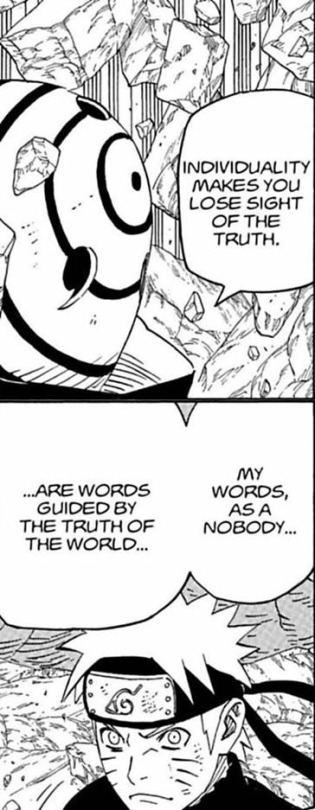
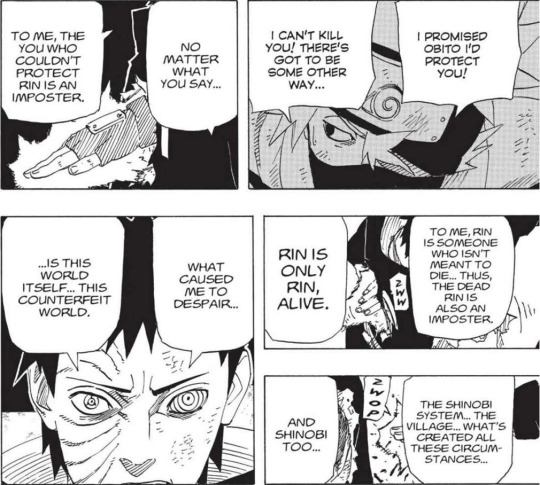
Basically, he considers bonds and interpersonal relationships to be a farce, because he believes the world will sever those ties, without fail, and cause people to sink into despair. Thus, uniting together would eliminate that and create harmony.
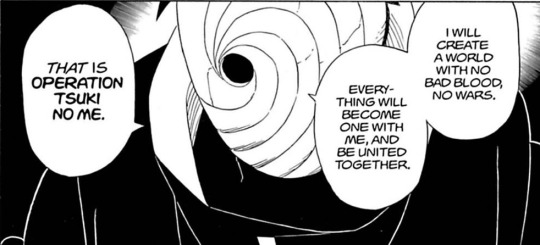
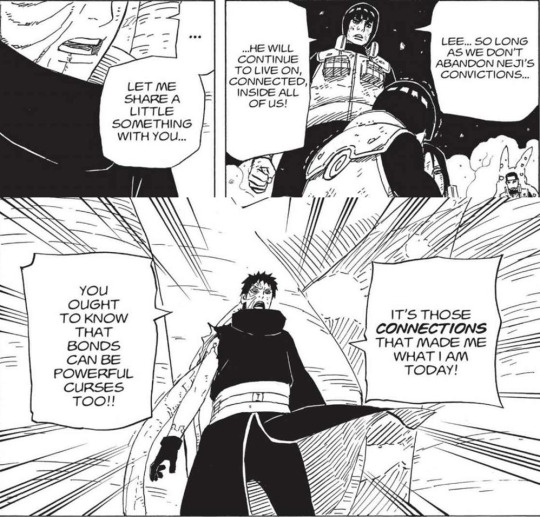
The way Obito sees it, this shinobi world that doesn’t align with how he thinks things should be is “false”, and the Moon’s Eye Plan / Tsuki no Me Keikaku is the remedy.
The thing is, while Obito did initially defect due to the shock, trauma, and despair induced by everything to do with Rin’s death, he still did not have the hardened outlook on the world he would display in his adult years. As he made moves towards the completion of his plan, Obito observed the shinobi world's workings and it only served to deepen his conviction.
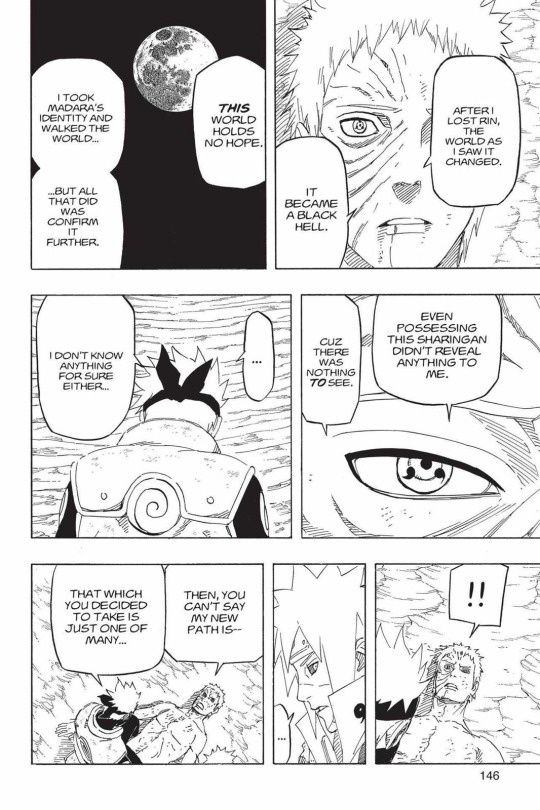
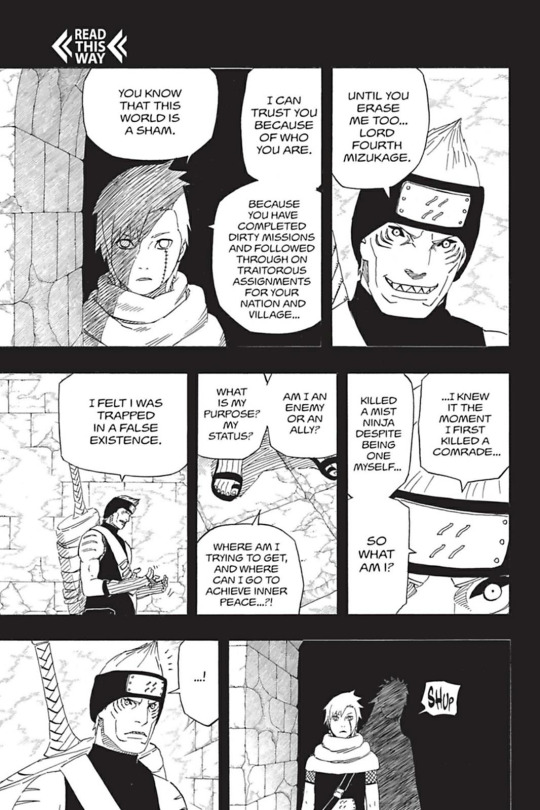

Obito, though not as far gone as Madara, steeped himself in the darkest areas of the Shinobi world. What he saw just reinforced his belief, or rather he made it so. He surrounded himself with fallacy (his identities of Madara and Tobi) and negativity. Even when seeing the brighter aspects of the world, Obito would brush it off.
See:
https://en.wikipedia.org/wiki/Cognitive_dissonance
https://en.wikipedia.org/wiki/Confirmation_bias
This shared outlook on the world may be why Obito considered Kisame "the person closest to him".
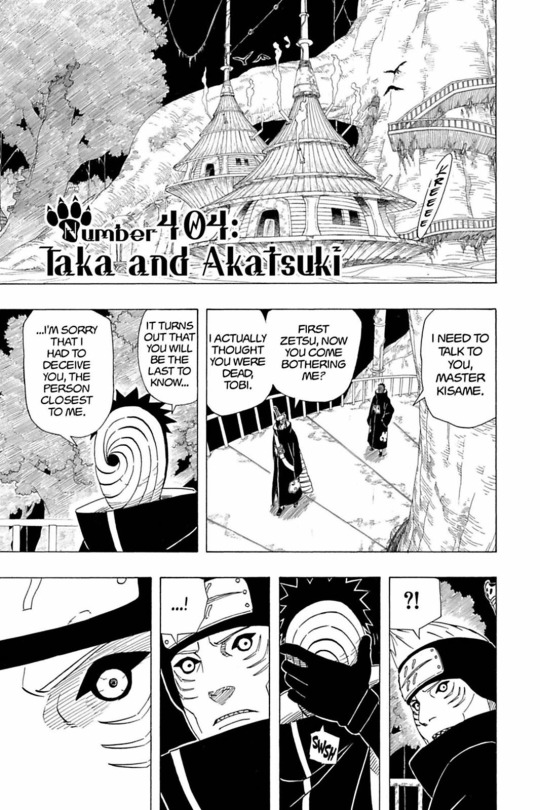
So, we’ve established what Obito is like by the time the main story unfolds. However, something starts to happen in Obito after Nagato’s betrayal at the end of the Pain Invasion arc.
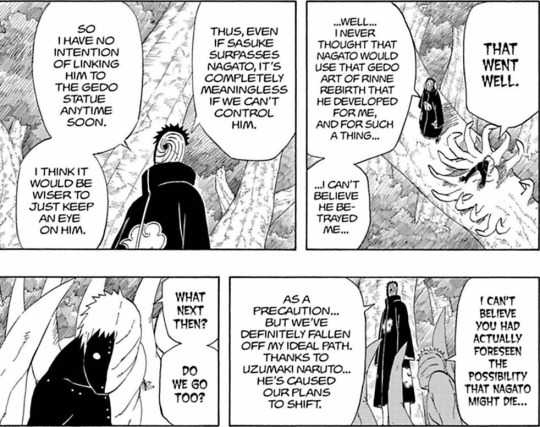
Obito is bothered that Nagato, who was quite similar to him, was convinced to switch sides. This sort of reignites the doubt in Obito's heart, and so he goes to ask Naruto about it. Naruto, the boy who was so much like Obito and inherited the younger Obito’s ideals by way of Kakashi.
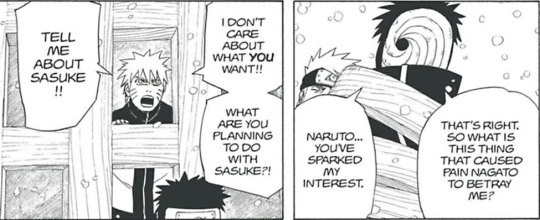
Of course Naruto cuts him off, and so Obito gets no immediate answer. His anxiety and anger towards Nagato and fixation on Naruto escalates when he fights Konan.
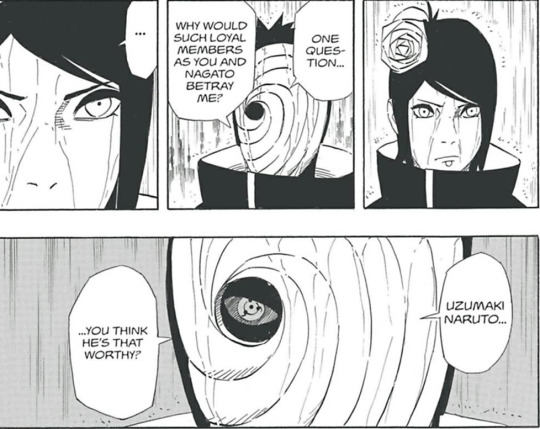
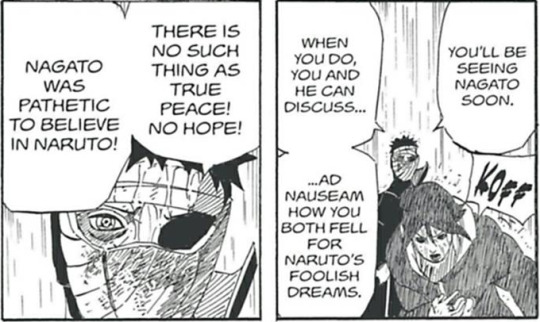
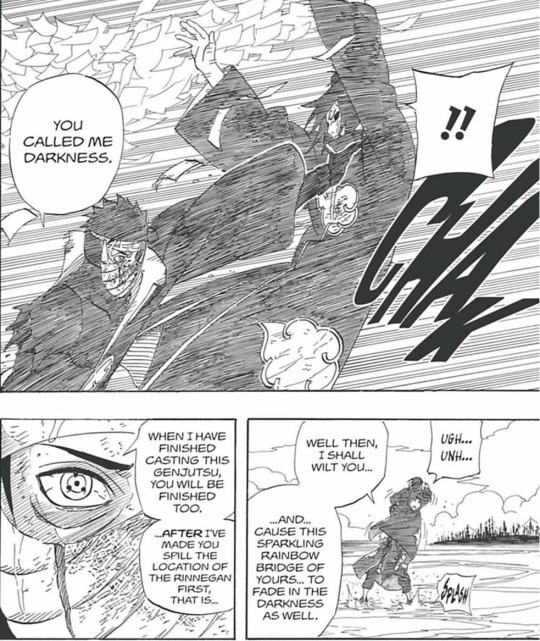
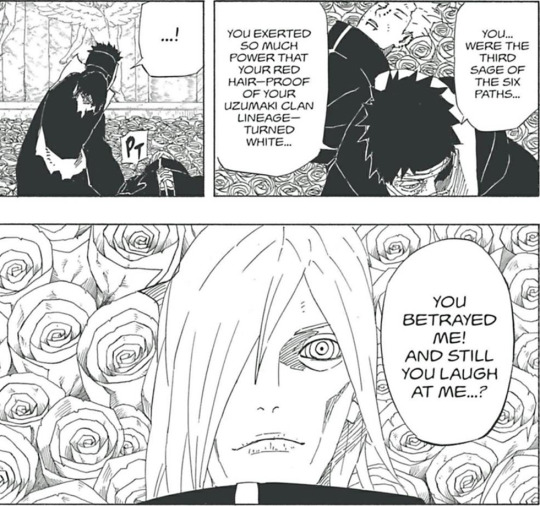
This, of course, would come to a head in the Fourth Shinobi World War, where the two shinobi finally clashed head on and pit their ideologies against each other.
Interestingly, Obito also sees himself in Sasuke. Both were motivated by the death of someone they cared about, but chose to nullify their sacrifice for the sake of their personal ideals.
Compare the following pages
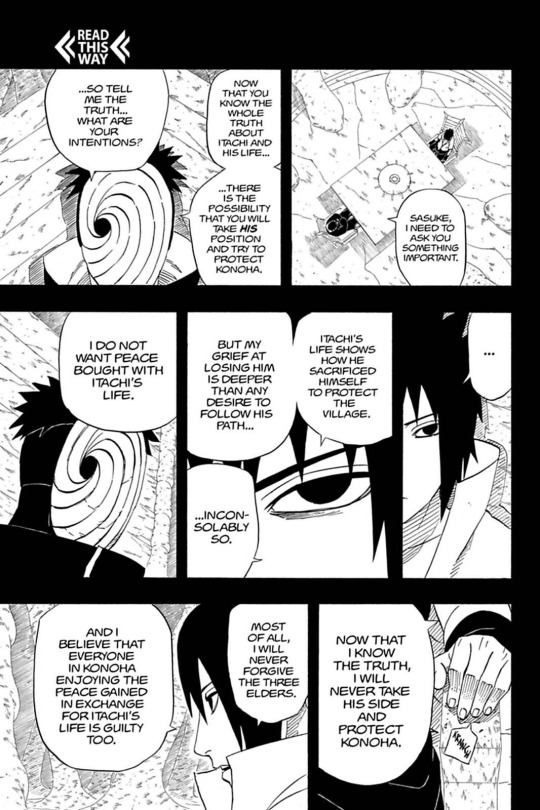
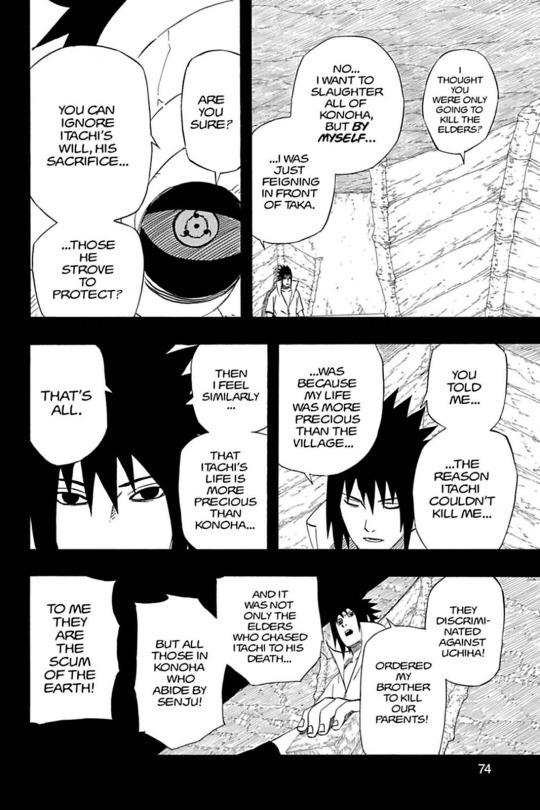
to this exchange
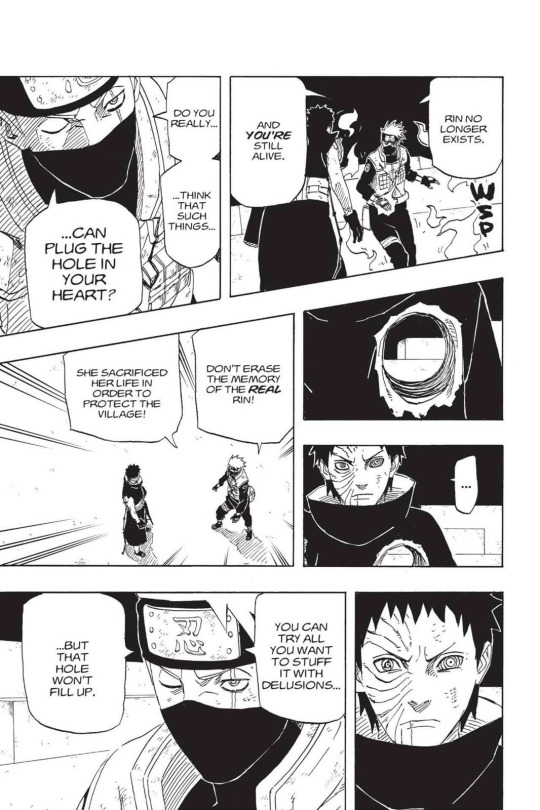
Obito was asking Sasuke if he had the resolve to shit on the sacrifice of someone he loved for the sake of his own motives. Basically asking if he was like him.
And well
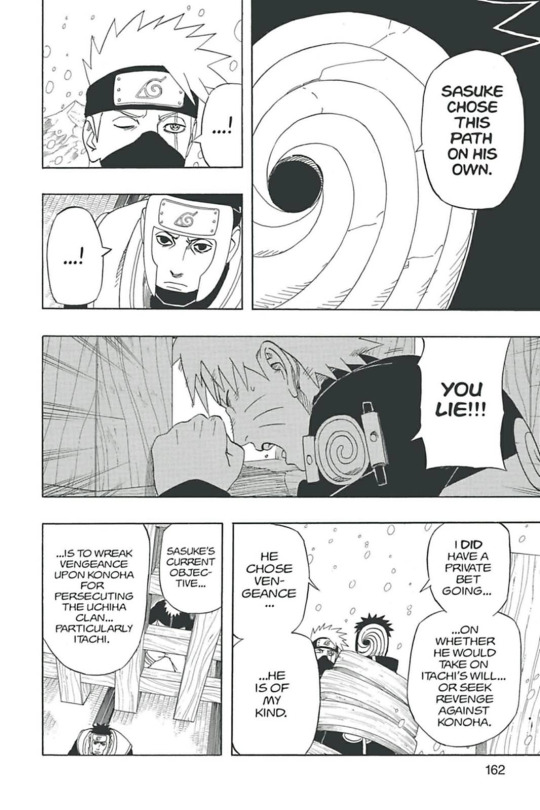
Obito’s corruption of Sasuke is even a direct mirror of when Obito awoke in a cave with Madara, who had sinister plans of his own for Obito.
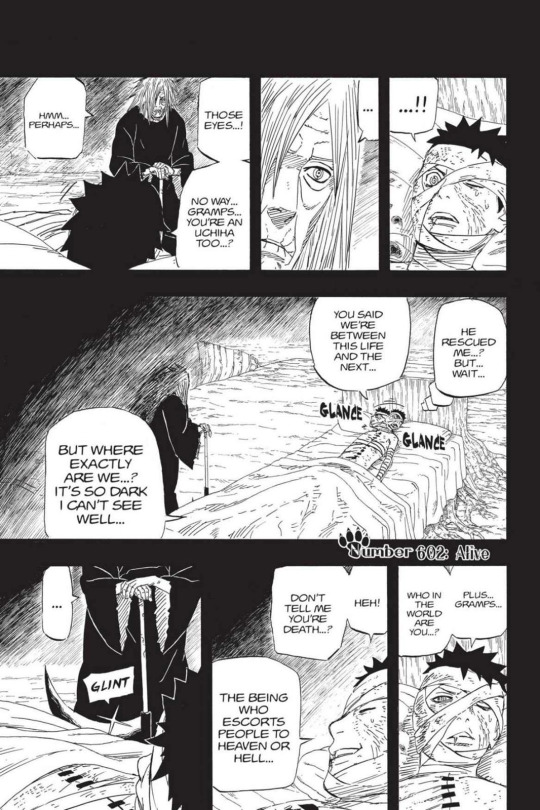
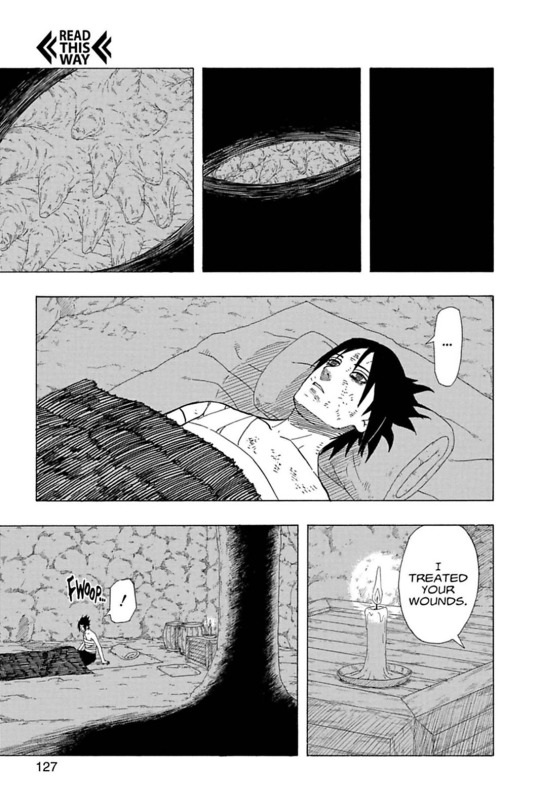
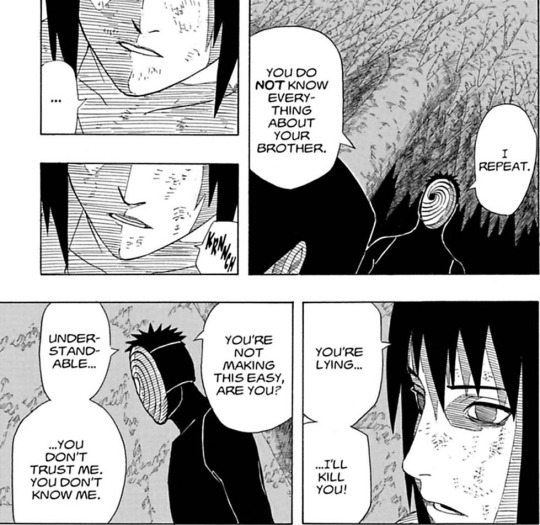
So yes early as the Gokage Summit arc, the conflict in Obito was making itself apparent. The fight Obito attempted to orchestrate between Naruto and Sasuke was a microcosm for Obito’s own inner conflict that would come to a head in the War Arc, specifically when Kakashi and Guy arrived on the battlefield to help Naruto.
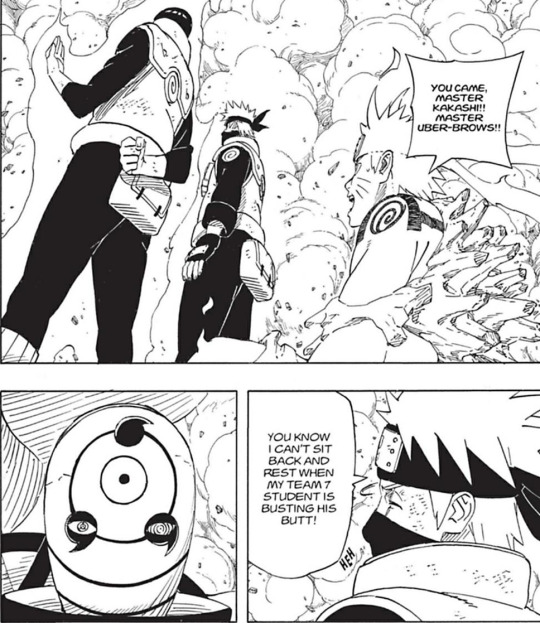
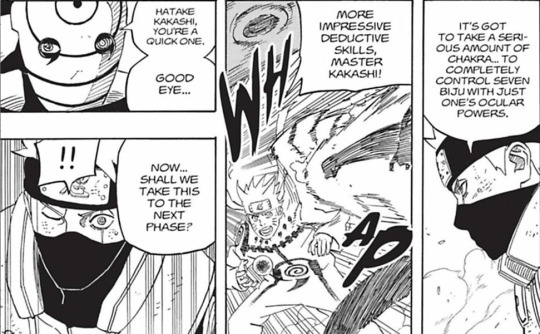
He struggles harder than he'd anticipated in his battle with Naruto, who begins to gain traction in their clash and amasses chakra from almost all the other biju as well as finally synching with Kurama.


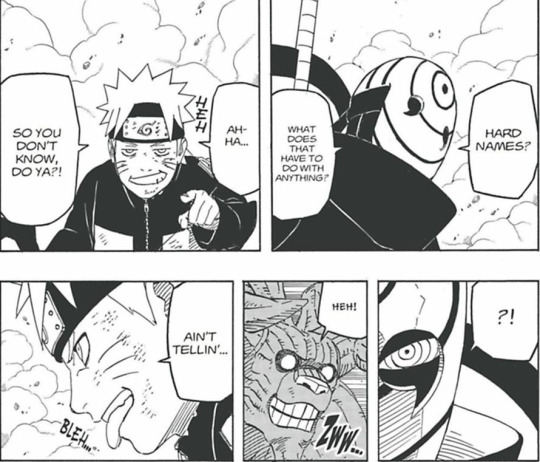


These past few panels are from Chapter 573, which contains Naruto’s comrades running to his aid and ends with this panel
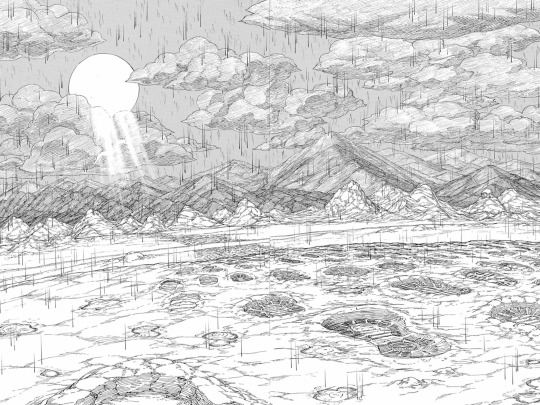
You’ll see later why this and a later panel perfectly bookend the meat of Obito’s journey to find himself again.
Now, Obito still manages to somewhat retain his composure in this chapter, but by the time the story next cuts to the battle his detachment has lessened. His lunatic rantings increase in intensity, and he becomes more invested in Naruto and Kakashi. He was probably having those Rin flashbacks people love to criticize too but they couldn't be shown then for obvious reasons.
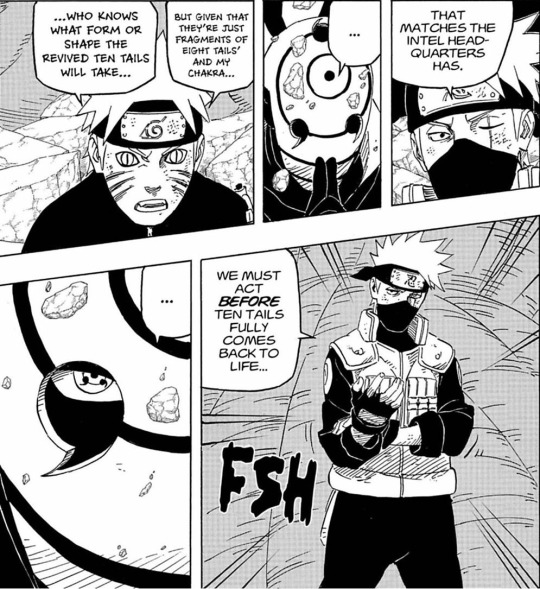
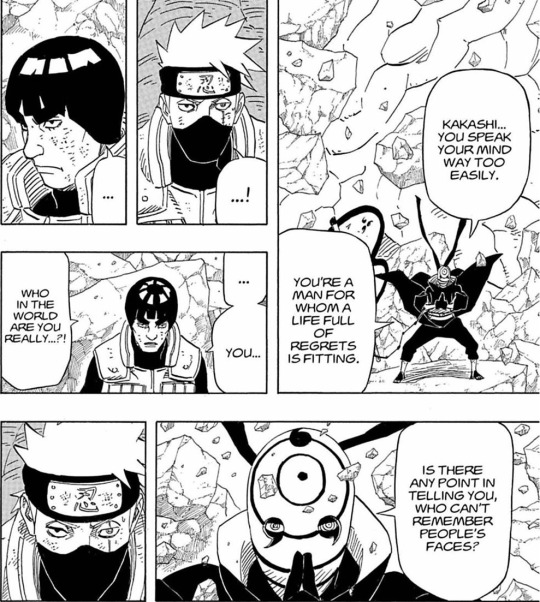
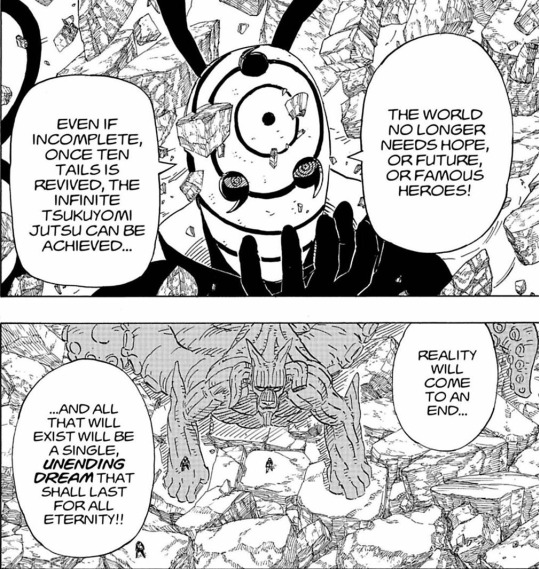

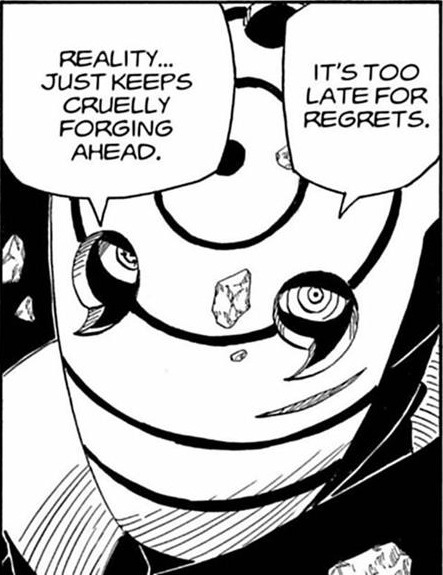
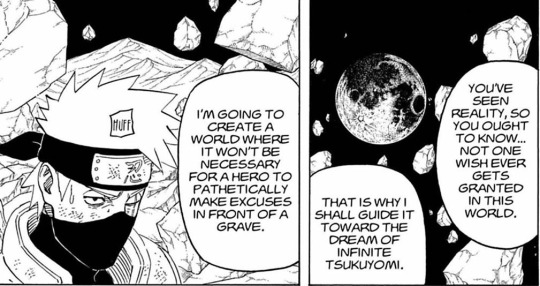
Once his mask is finally broken, Obito can no longer really run from his insecurities and grief. After all, now that he's unmasked he won't be able to escape more personal questions from Kakashi. He has to address things in more detail than he’d like to, at least to some extent. Although, he initially maintains some remnants of the detachment he'd held til then.
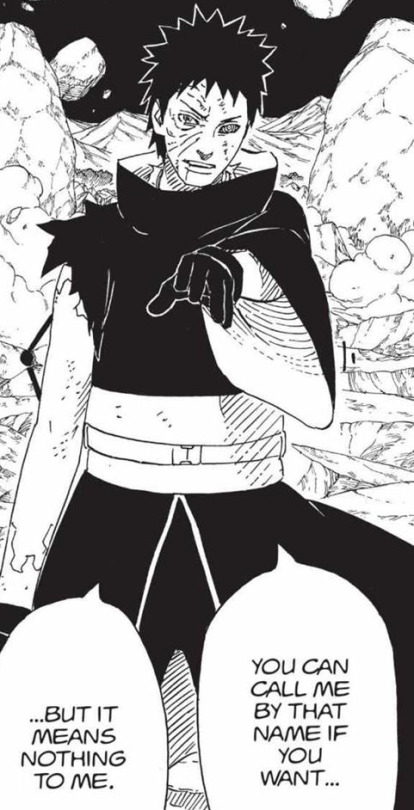
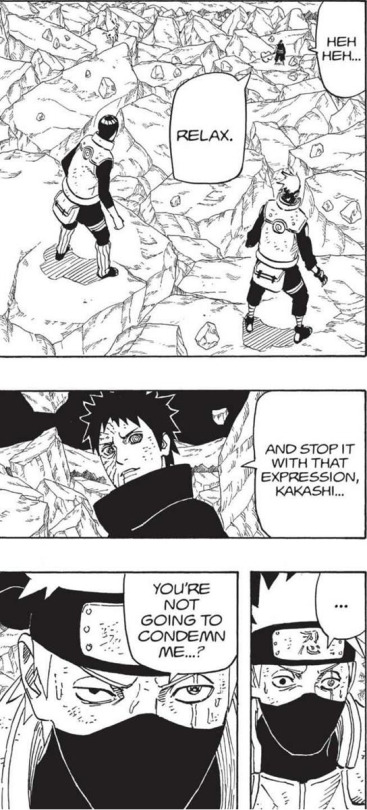


However, he soon fights Kakashi one-on-one and his rage boils to the surface.
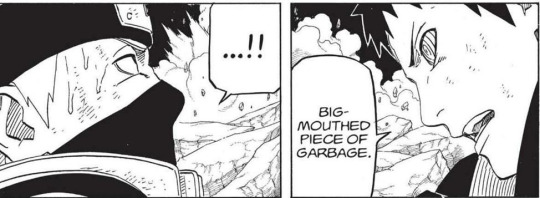
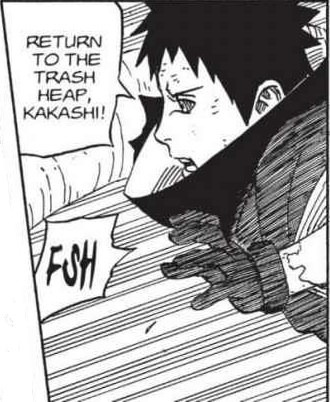
Now I only posted enough of this to get the point across. But this man really beat the living shit out of Kakashi. He’s angry, despite his prior claims to have cut himself off from personal ties.
At any rate, towards the conclusion of their scuffle, Naruto joins in and starts touting his resolve to protect his comrades and defeat Obito and Madara.
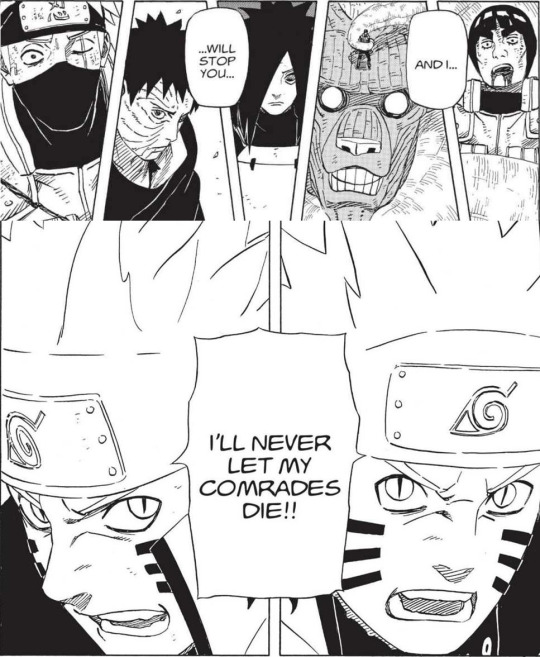
Now, it's around this point that Obito really attempts to crush Naruto's ideology, as it's basically his own (formerly of course). But Obito desiring to twist Naruto and in turn solidify his own conviction was first hinted during his fight with Konan, where he swore to "fade him into darkness".

He believes Naruto, and basically every shinobi, is destined to turn out like him (scum, basically. At least, I doubt he meant everyone would become a psychotic masked murderer).

Itachi earlier foreshadowed this same thing to Naruto, warning him of what would happen if he forgot the people that got him where he was.

Obito recognizes that Naruto's ideology was basically the mirror image of his own, among their other similarities. By this point his resolve has wavered a good deal, so he resorts to trying to break Naruto's spirit in order to convince himself his path isn't mistaken.

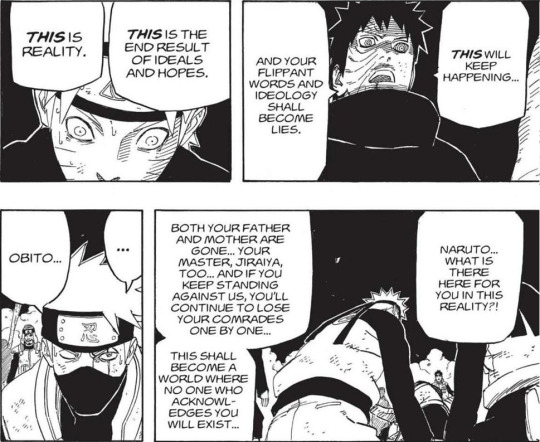
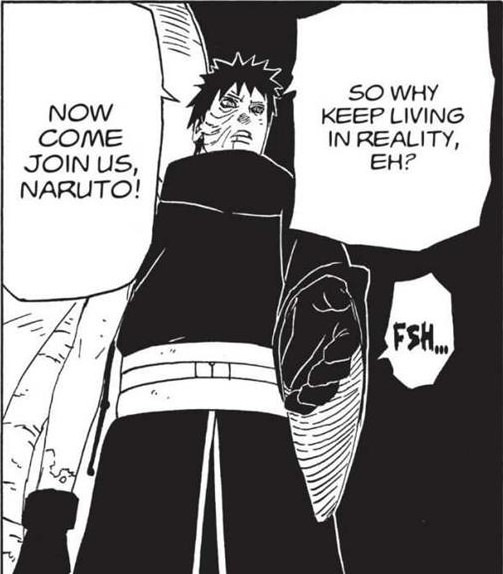
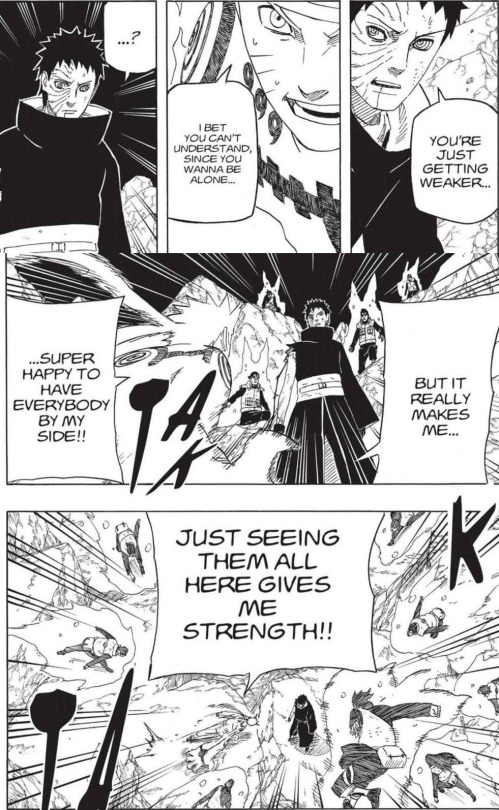
This is a good time to bring up something I don’t think I can fit anywhere else. While trying to convince Naruto to abandon reality, Obito brings up the deaths of Minato, Kushina, Jiraiya, and of course Neji. All things caused, directly or indirectly, by Obito himself. This is why the act that Madara orchestrated Rin’s death is irrelevant.
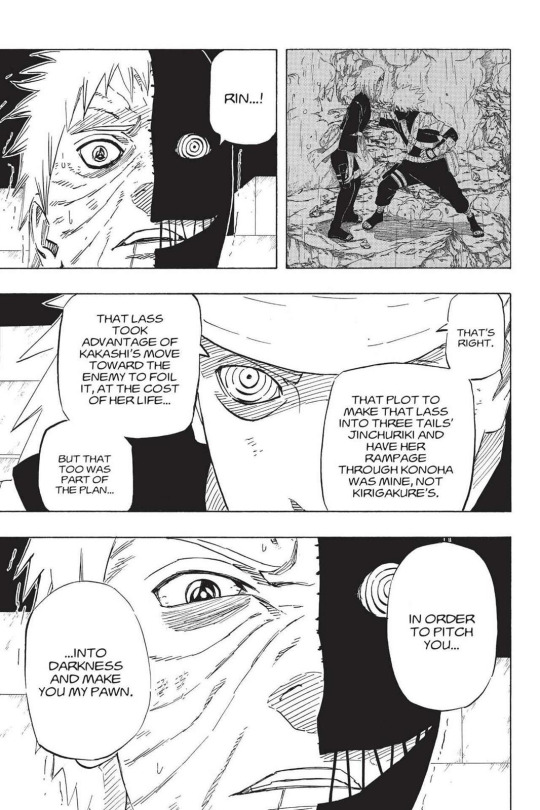
It’s beside the point of Obito’s despair and I dare say if he learned of this while still “evil” he wouldn’t have changed. He didn’t even like or trust Madara to begin with. It was the fact that such things occurred at all that raked at Obito’s mind. After all, it’s not like Obito has never manipulated people for his own ends.


So this moment is more meant for Madara’s development, because it demonstrates his extreme arrogance which is shattered when he is betrayed by Black Zetsu and learns he was the biggest pawn of all.

Anyway, soon enough the Ten Tails starts to go out of control. This prompts Obito to commence with his plan of making Kakashi stab through Madara's puppet seal, which would enable him to become the Jinchuriki.


I'm pretty sure I've covered all the relevant characterization focused on in his battle with Kakashi in previous parts of this, so I'll just speed ahead to after that.
Obito comes out of the Kamui dimension and is immediately assaulted by Madara, who wants Obito to Rinne Tensei him.

This point marks an interesting shift in the way Obito is portrayed. He is seen struggling against Madara's rods and relying on the memories and thoughts of his former comrades to propel him forward and resist the takeover.

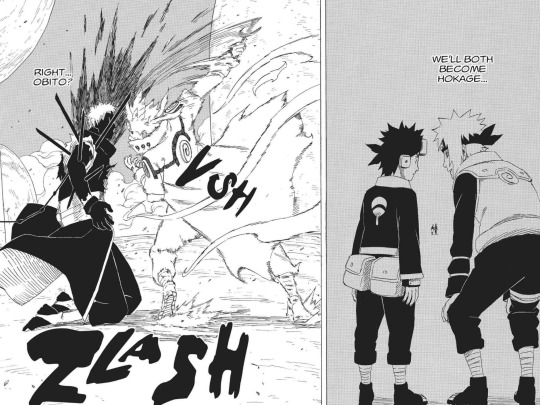
It’s moments like this that almost makes him feel like the protagonist.
But even with that, Obito still retains a villainous aura, as seen when he confidently declares that the war hasn't reached its end.

Yet even after succeeding in becoming the Jinchuriki, his ego was still under siege by the Ten Tails. And once more he draws on his memories of his comrades to resist and regain control. This frequent blending of heroic and villainous portrayals makes his eventual change feel even more organic in my opinion.
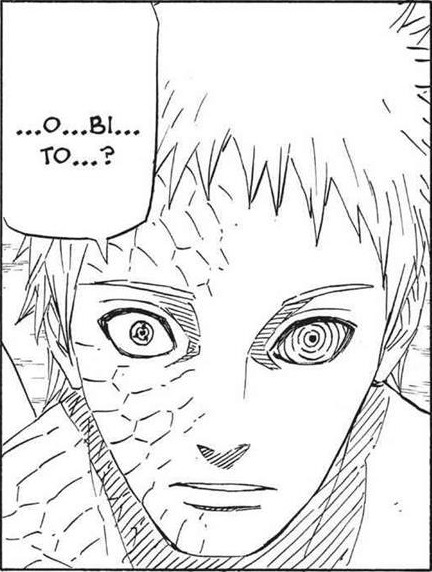
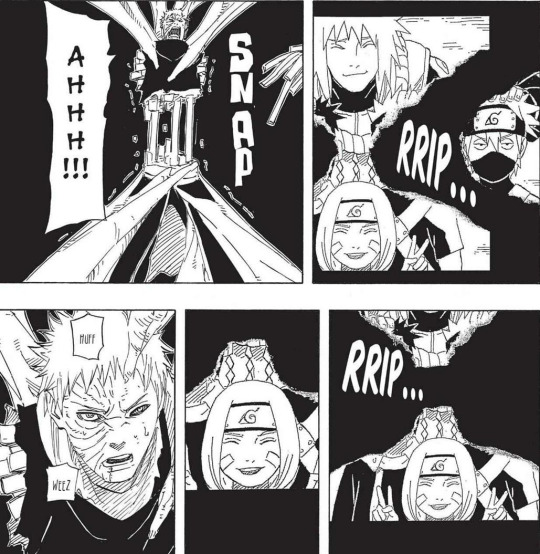
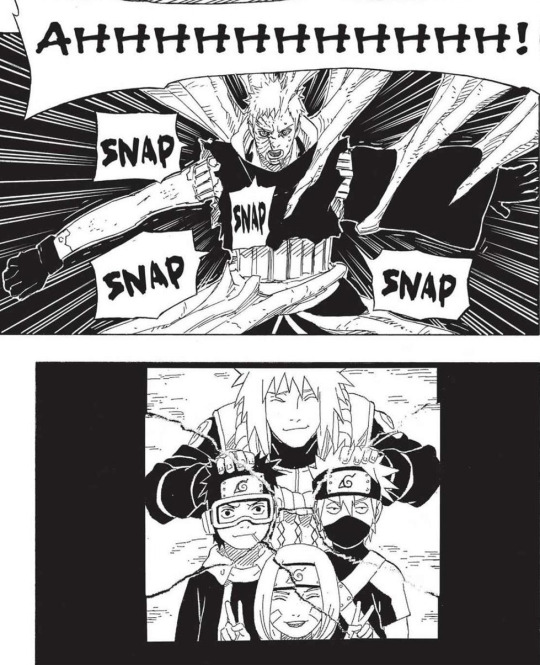
Obito's newly acquired power makes him the focus of the war, although Naruto, Sasuke and others start to gain on him and even the playing field. Obito becomes more agitated at Naruto and his constant interfering with his aims.
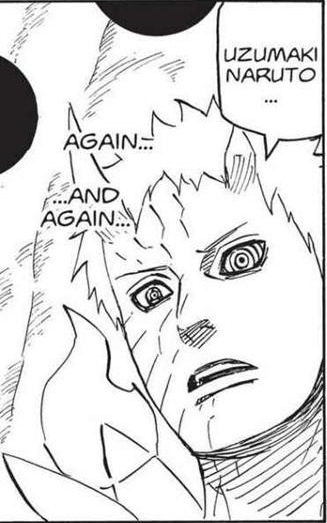
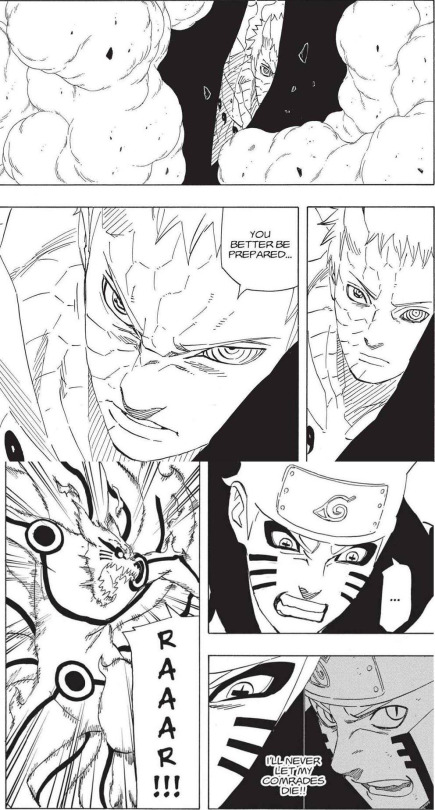
His frustration and fixation with Naruto has grown to an insane point. And it started with something so small and seemingly trivial:
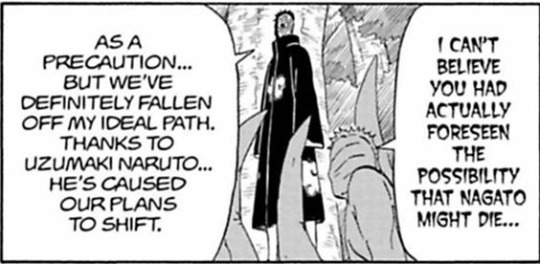
So anyway, Obito continues to question and nudge Naruto in order to reach a conclusion about his own choices.
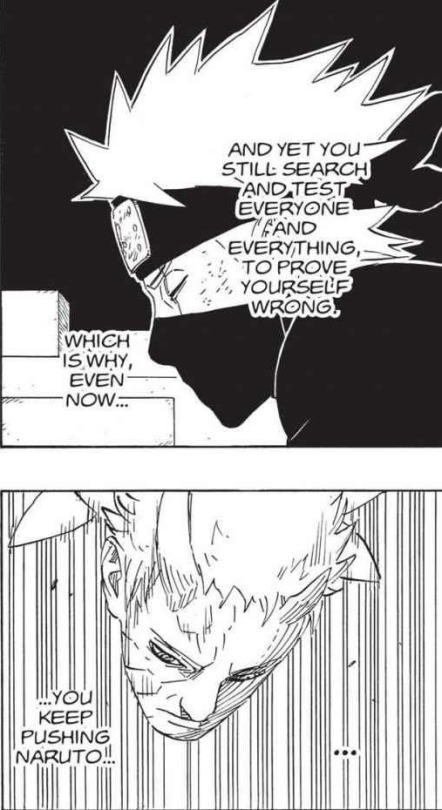
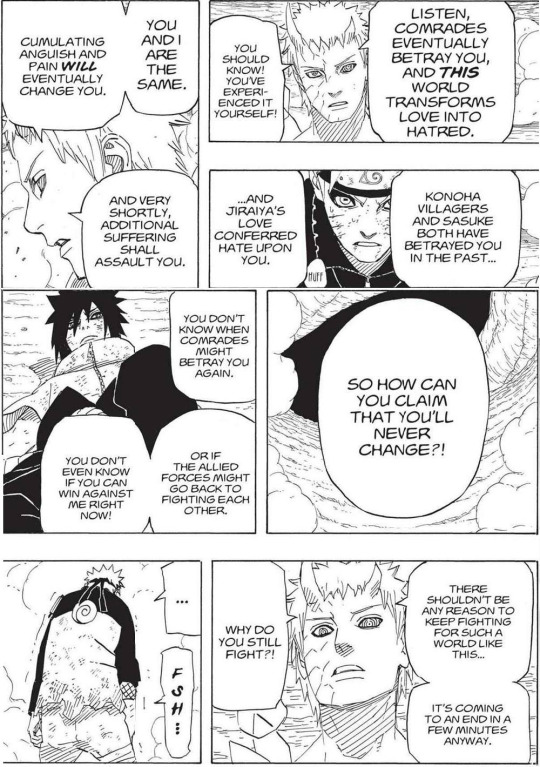

Now, the "my ninja way" thing may come off as bullshit and might not seem like a good answer. But the thing is, Obito isn't asking Naruto how to fix the shinobi world's problems. He's simply trying to see if he has the will to persevere no matter what the world throws at him. And by this point, Obito is almost convinced. Obito was never about grand visions concerning villages and government. That was Madara. Obito was always more intertwined with the personal aspect of suffering, which is why Naruto’s refusal to break infuriates him.
Before:
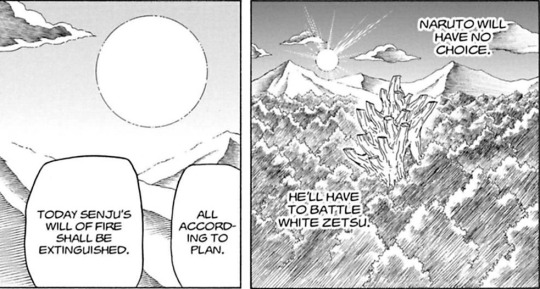
After:

By this point Obito's resolve has wavered considerable, resulting in his defeat.
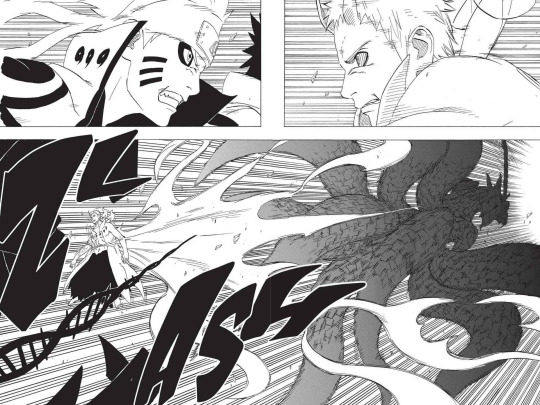
So this is the part where the main "TnJ" or "Talk no Jutsu" stuff comes in. Through the contact between their chakra, Naruto and Obito enter a sort of shared mental space. There, having connected to his memories, Naruto confronts Obito, frustrated that someone so like him turned out how he did. A lot of the shit discussed has already been covered though, so this'll be brief.
I'll just post some interesting tidbits I may not have covered well enough earlier.
First is this:
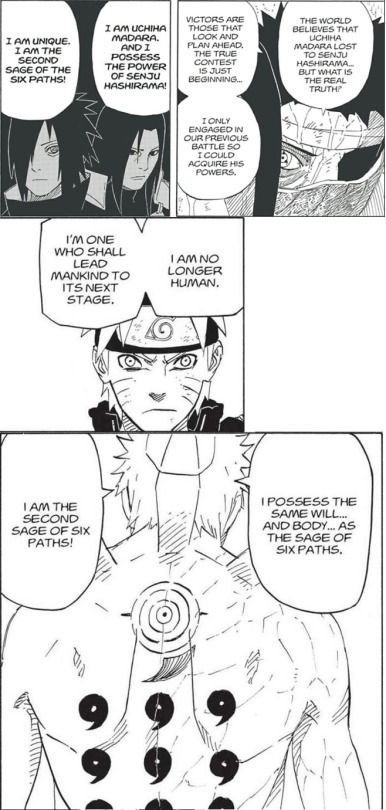
Obito viewed himself as the second coming of the Sage. Looking solely at the first image, you might think he was referring to Madara. But as shown in the second from his talk with Naruto, he really was referring to himself. He also refers to Nagato as the “Third Sage of the Six Paths” after his fight with Konan, presumably as someone who also carried his will.

Why did he not include Madara as a Sage? Well for whatever reason, Obito never seemed to trust Madara. He never wanted him revived, and has stated he never saw him as an ally
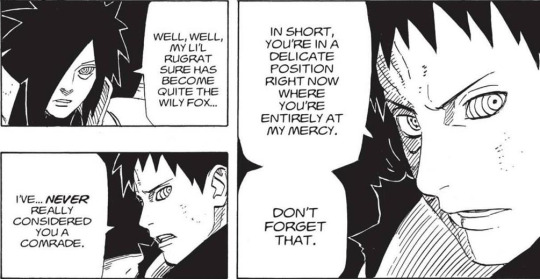
Might have something to do with that puppet seal Madara planted in him to prevent him from becoming the Jinchuriki himself.
Another interesting point in Obito’s talk with Naruto is this parallel with the Kakashi Gaiden.
Chapter 241:
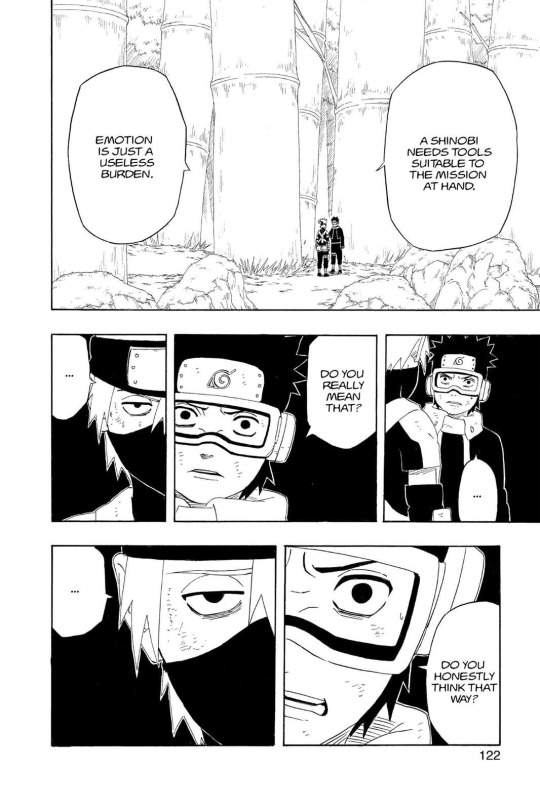

Chapter 653:
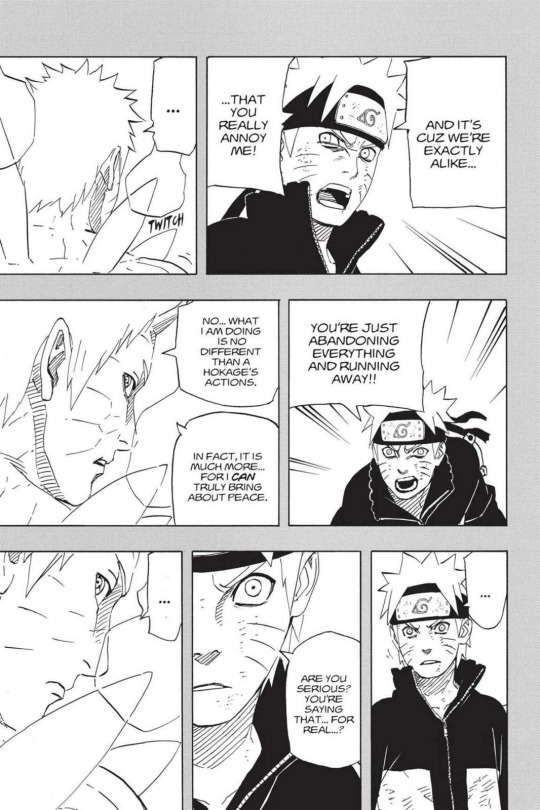
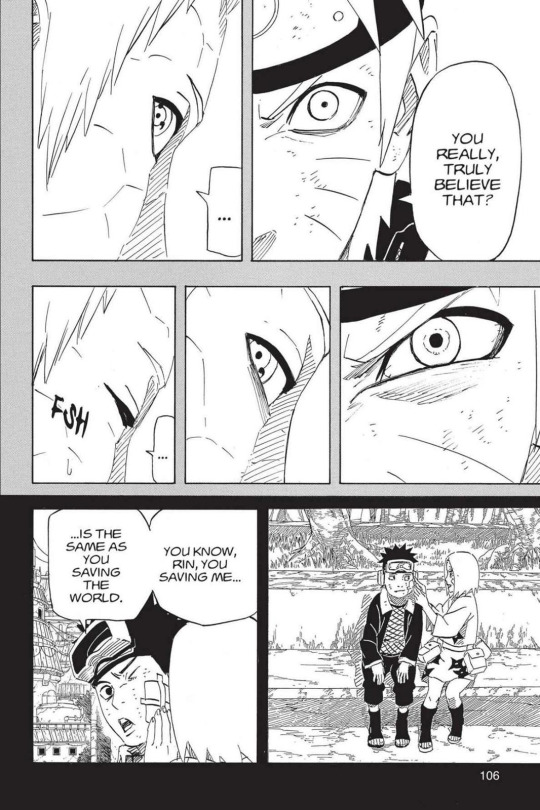
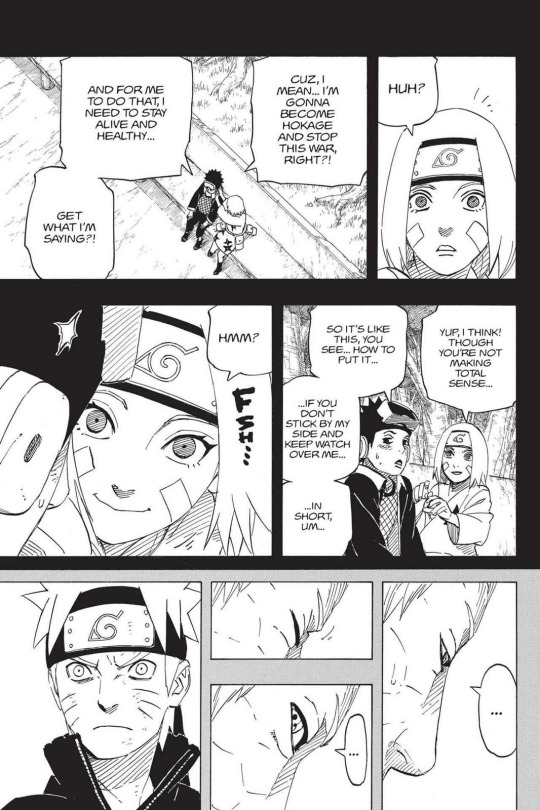
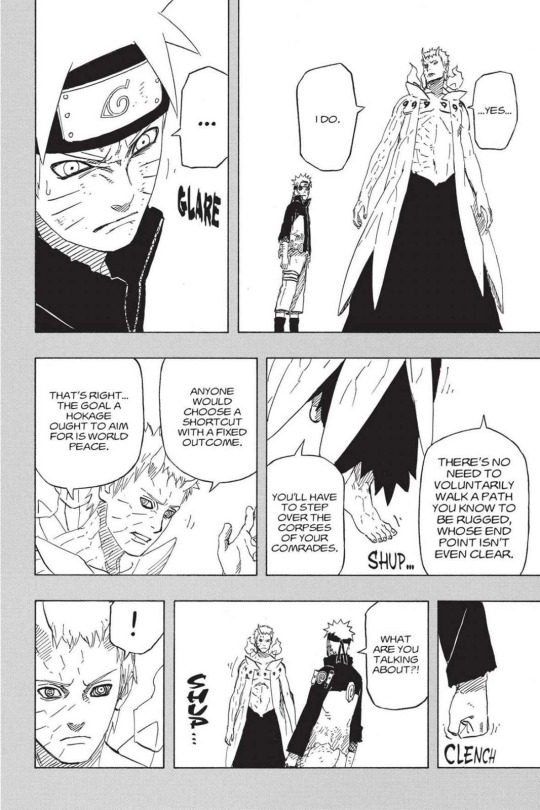
Slick.
So at the end of this talk, Obito is more conflicted than ever, and with the combined power of both Kurama and the Allied Forces, The Biju are released from Obito. It works well thematically as an end to Obito's threat, because Naruto both utilized the power of all his comrades on the battlefield (in the ultimate triumph of Obito’s original philosophy over his new one), and Kurama's power, which was originally placed in Naruto for the purpose of defeating Obito in the first place.

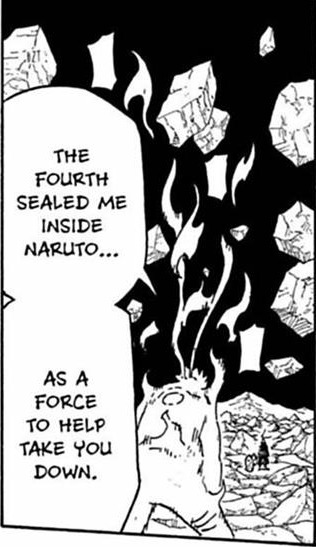
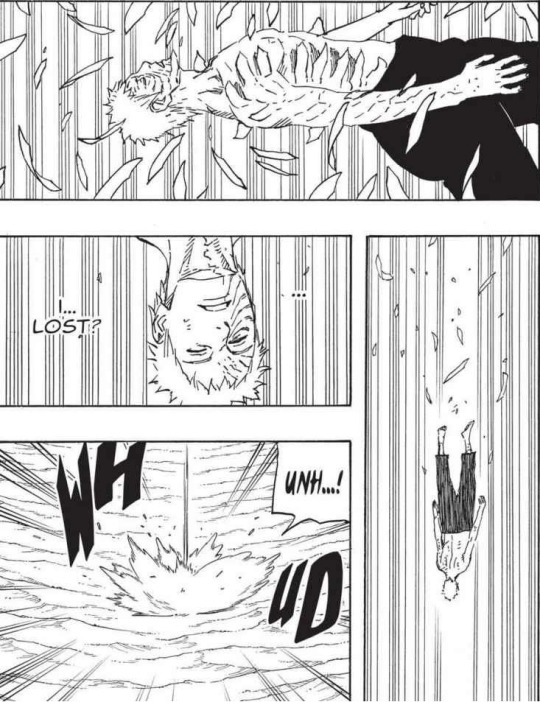
Having been definitively beaten, Kakashi has a final talk with Obito about the path he chose.
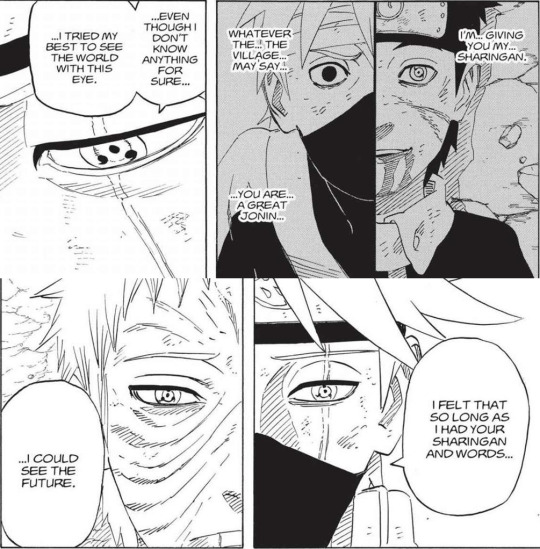
And guess what the chapter ends on?
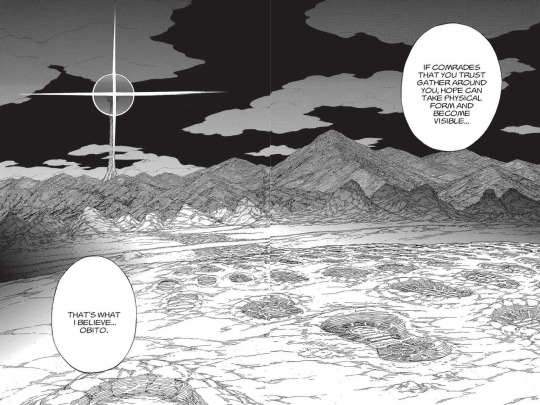
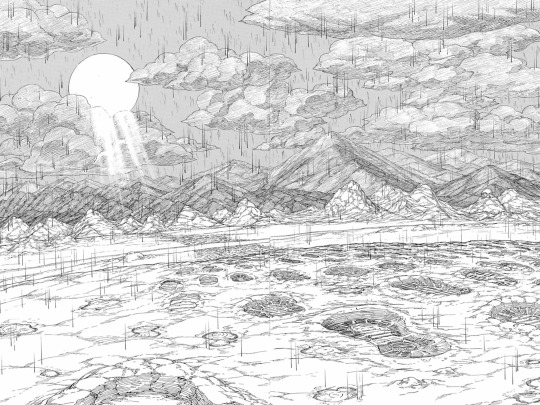
Our friend, the panel from Chapter 573. Fucking slick and thematically poignant.
At this point, Obito finally accepts that his path was wrong, and the whole Nagato thing that jumpstarted his indecision is given a conclusion as well.
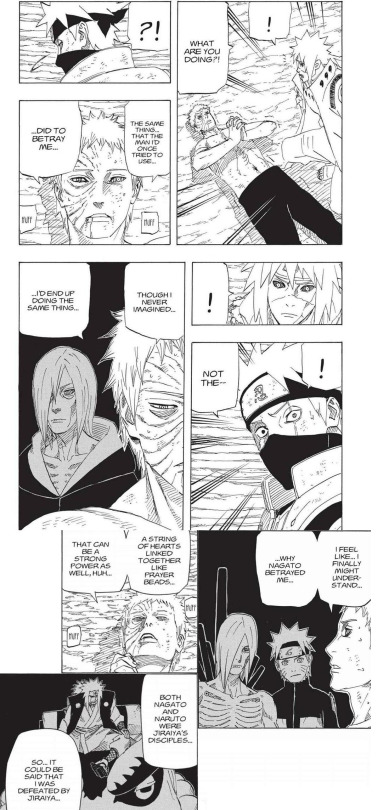
He resolves to give his life to Rinne Tensei his victims in the war, but Black Zetsu intervenes and forces Madara's resurrection. Obito is put out of commission for a while, but eventually regains his senses, and uses Madara as a means to steel his resolve. Sure, he had switched sides, but he was mellow, depressed, and wrought with guilt. He didn’t even believe himself worthy of redemption.
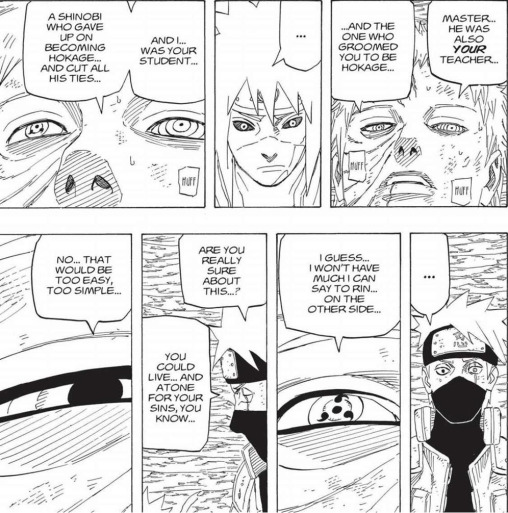
But by talking with Madara, Obito contrasts Madara's ideals with that of Naruto (and also his own original ideals), and finally reclaims his identity as Obito Uchiha, resolving to do his best and end the war.
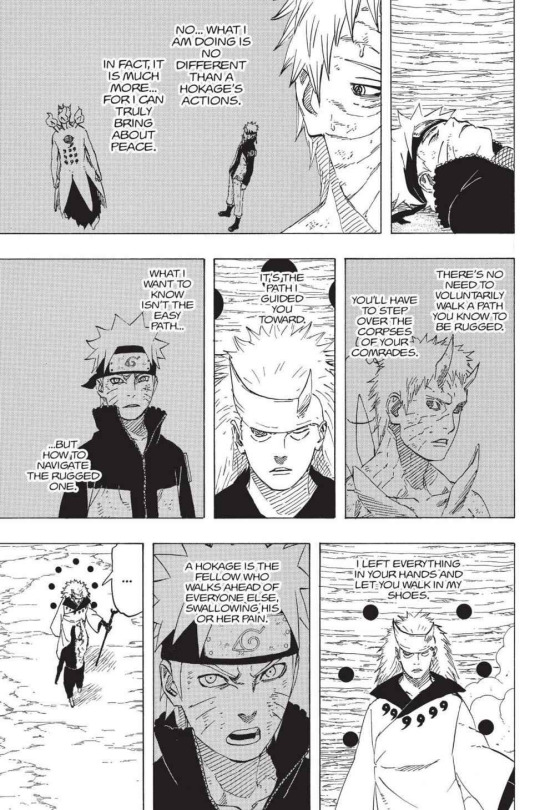

This layout with Obito caught between Naruto's (in actuality his own) and Madara's ideologies is a small scale representation of a major theme of his character. Same with his fascination with Naruto and Sasuke, seeing a part of himself in both of thmm. Obito is the man on which the core of the Naruto series hinges. Even how his literal physical body was half Uchiha and half Senju DNA. He has always been a man of duality, represented by his association with the concept of Yin and Yang:


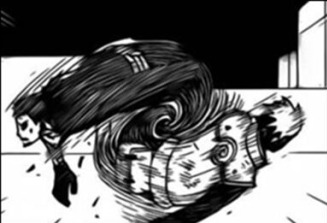
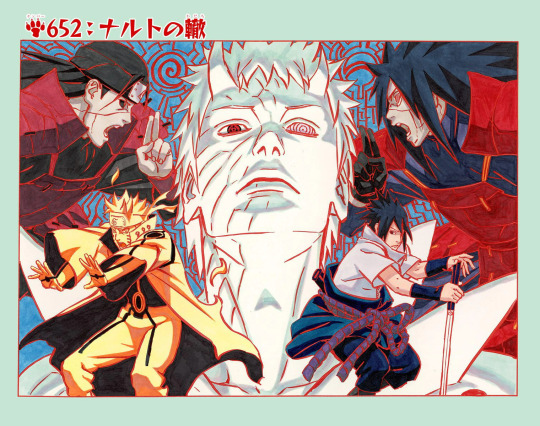
Yin and Yang, or as Obito himself is fond of saying, Oil and Water.
Obito proved to be an extremely valuable ally in the fight against both Madara and Kaguya, and gave his life one more time to protect Kakashi, Naruto, and Sasuke. He fought on with everything he had to redeem himself for even a fraction of the damage he’d done. He died not as the Masked Man or the harbinger of calamity, but as Obito Uchiha. Obito, in my opinion, is the best written character in Naruto. There’s way too much unjustified hate and too many misconceptions about the character. I put this together out of my recognition of that and desire to share my passion for this boi. Thanks for reading all the way through (if you did) or even reading just a bit.
252 notes
·
View notes
Text
Characters: Vampires
Disclaimer: None of this is mine, everything was collected from Amelia Atwater-Rhodes’ old websites, the wiki, and the old message boards. Anything written in the first person is a direct quote from Amelia Atwater-Rhodes. For all the entries in the The Den of Shadows Reference series, check the tag or this page.
Katama’s Line
Jeshickah
Before Silver ruled, Jeshickah did, through Midnight. Yes, she is a lunar vampire, and hence a Nyeusi. She is also tightly bound to a k'jait named Leshan. Jeshickah named Leshan when she was still human, several years before her death. She bound herself more tightly to him throughout Midnight's reign, gaining power for herself and for those descended from her. Though they are not consciously aware of it, and it is not their primary form of sustenance, all of Jeshickah's descendants feed through touch. Their k'jait power is also responsible for Jeshickah's line's ability to dreamwalk, which is not normally a vampiric ability.
More information can be found in the Katama’s Line entry.
Nathaniel Stevens
Nathaniel Stevens (Christian name, he doesn’t know his birth name) is one of Midnight’s few inhabitants who was actually brought to the Americas by the human triangle trade. This happened when he was very young, so he grew up a slave… by human standards, anyway. His Master was a man called Elliot Stevens (hence the last name).
Nathaniel fell in love with a girl named Ellen, Elliot’s only daughter. Obviously, this didn’t go over well once her father found out.
Jeshickah, with recently-changed Taro in tow, discovered Nathaniel tied to a post after Elliot had beaten him. For reasons Nathaniel doesn’t really know or understand (and certainly didn’t care about), she demanded Elliot sell him to her.
I haven’t finished writing this book, but I do know that Jeshickah intended Nathaniel to be a trainer, and he was the only one of the five men she chose over her career who outright refused her, in every way. Among the many tricks she pulled was giving him Ellen as a gift, after Jeshickah had broken her… one of the many reasons Nathaniel hates Jeshickah.
Long story short, he angered her so much she broke several of his ribs, crushed his windpipe, etc, without intending to. When Katama pointed out that a human man had bested her (gotten her to kill him before he broke, which had been his intent at that point), Jeshickah changed him instead. Unfortunately for her, fortunate for Nathaniel, he managed to claim freeblood status after his change (he’s a quick study, picked up on that law swiftly) since she had never broken him, and Katama backed him. He needed to stay connected with Midnight, since there was no other power for his kind (until, obviously, Mayhem’s rise), but he became a mercenary instead of a trainer… putting him into a good position to get the best information, etc.
As for personality—and again, if this doesn’t work with your story, don’t feel forced to stick to it, I’m just offering it in case you want something to play with— Old-Midnight Nathaniel considers himself a green-blooded mercenary with no loyalty to anyone, but at the same time is proud of the fact that he has more “rules” (too green-blooded to admit they’re morals) than the rest of Jeshickah’s brood. He won’t extend money or energy to save someone who’s worthless… he says… and usually it’s true… but he also doesn’t abuse people by nature the way the trainers will. He doesn’t lose sleep over Jeshickah’s slaves, mainly because when she says “slave” it’s a mindless creature and far too late for it to be saved. He picks his battles by those he can win.
Xeke Catene
Xeke Catene (not his real surname, Catene is just what he goes by) is technically a member of Katama's line, but he is powerful enough that many people will refer to him as if he led his own line. The third member of the Wild Cards, he focuses his attention on beauty, and the senses. His studio is currently in the pre-production stages of Apocrypha, which is based on the myths of the Dasi, and the story of the Obsidian Guild.
According to a Q&A with Amelia Atwater Rhodes:
Q: How does Xeke not remember his creator? Didn't someone have to feed him blood when he awoke or tell him of how Nyeusigrube worked?
A: Yeeeeh, you'd think he would remember it, wouldn?t he? He claims he was really, really drunk. I?m not sure I trust him.
Q: Why doesn't anyone want to claim him?
A: Xeke is a rabble-rouser. He breaks the rules by following them. He irritated powerful people but has enough powerful allies that no one can get rid of him. Who would want to claim responsibility?
Oh, and there's the fact that Jeshickah absolutely forbid her fledglings from creating their own. And there's the fact (this goes back to a previous question) that technically, as Jeshickah owns most of her fledglings and Xeke is descended from one of them, she owns him, everything he has worked for, and everyone he protects. When Jeshickah came to town, Xeke got out of the way. If he is lying and does remember his creator, Xeke doesn't want to claim that progenitor any more than that vampire wants to claim Xeke.
Kendra’s Line
Lord Daryl di'Birgetta & Lady Brina di’Birgetta
Birth Name: Lord Daryl di'Birgetta
Birthplace: England
DOB/DOD: b. 1630s CE d. 2002
Changed: After 1650 CE
Sire: Brina di'Birgetta
Fledgling(s): Jerome
Birth Name: Lady Brina di'Birgetta
Birthplace: England
DOB/DOD: b. 1630s CE d. 2002
Changed: After 1650 CE
Sire: Kaleo Sonyar
Fledgling(s): Daryl di’Birgetta
Affiliations: Allied with New Midnight and formerly allied with Midnight.
Appearances: Midnight Predator
Lady Brina and Lord Daryl were born to a wealthy household in England in the early 1650s, with Daryl the older by three years. After their mother died in childbirth to Brina, their father pampered them- especially his youngest daughter. The siblings were provided with everything and anything they could possibly want, which was quite a lot.
More than anything, Brina loved rich colors and warmth. She adored painting, and her father brought in the best teachers he could find. Though the actual supposed instruction went to Daryl- as most of the best teachers refused to teach a woman- Brina was always there, on the other side of the room, listening and remembering to every word and every brush stroke, which she would promptly replicate after the lessons were done. Despite his only moderate interest in the arts, her brother indulged her absolutely, as he always had and always would.
In 1665, the plague broke out in London. The illness was brought into the household by a servant, after which the di’Birgetta home was quarantined. Brina contracted the plague, but recovered; her brother was never afflicted by the illness, but spent most of the family finances in bribes to the nurses who would bring food for a price, and finally for forged letters of health so he and Brina could escape and flee the country.
Impoverished and suffering badly in the aftermath of her family’s death, Brina did what she believed to be the logical thing, and promptly decided to dedicate herself to a church, preferring martyrdom to marriage. As you might imagine, the religious devotion did not last long, as Brina discovered that God wasn't quite on the top of the list of things she loved; painting and her brother came first, followed by naphual red and cobalt blue and a great many other hues and shades, with God somewhere near the middle to bottom of the list, just above cooking, cleaning, embroidery, strangers, and the plague.
After being caught in the arms of a man (some rumors say said man was her brother), Brina was expelled from the convent, and returned to a destitute home. With her reputation now in tatters, it was highly unlikely that she would ever make an honest and wealthy marriage, so she again did what by her standards seemed personally reasonable: she tried to become mistress to one of the famous painters in the area, so she could afford oils and pigment.
The affair might have ended when his wife objected to Brina posing the proposition in the drawing room during tea time, but it most certainly ended when Daryl (who had accompanied Brina on her insistence as a chaperone) killed the man in question.
At that point, Daryl swept his sister off to Italy, where for about a year they posed as man and wife in a small home about a mile outside of Rome. Brina began to sell her paintings, which quickly caught the attention of Kaleo Sonyar- noted painter, sculptor, and musician. He tried to get her to run away with him, and she in return invited him into a ménage e trios, which is just about the only time that Daryl or Kaleo have a) been in agreement and b) denied Brina anything at all.
For several months, Brina refused Kaleo's offers to change her, until he pointed out that she would be able to afford more and better paints if she didn't need to buy things like food... and until he told her about Midnight, a new empire, where she would be a noble eternally, surrounded by as many slaves as she wished.
In 1669, Brina was changed, and she, Daryl and Kaleo made their way to Midnight, where Brina was absolutely charmed by Jeshickah's recent creations- Varick, Taro, Gabriel and Jaguar. Over the next two years, Jeshickah repeatedly tried to buy Daryl from Brina, without much success. However, it wasn't until Daryl tried to murder all the trainers by hiring a Triste to spike their slaves' blood that Jeshickah put her foot down.
In response, Brina changed her brother, who soon became one of Kendra's unrequited favorites. Such grace ascended him into the vampiric aristocracy, and his rapidly-growing wealth (returning to him now, based on several good investments, and Brina's success as an artist) bought a great deal of lenience from Jeshickah's kin so long as he agreed to stop trying to kill them. Which he did, as soon as they agreed to stop trying to seduce Brina.
By 1804, Lady Brina and Lord Daryl were well established as incredibly wealthy supporters of Midnight. Their private estate was filled with slaves in various stages of training and health.
Brina had just finished a very successful series of paintings of lovers, the best of which was an intense homoerotic piece focusing on a dark-haired Italian and his ash-blond English lover. The piece, one of Jeshickah's personal favorites, hung on the Mistress of Midnight's wall for several years, and inexplicably made Varick go pale every single time he saw it.
Daryl meanwhile had discovered that, though he would never develop his sister's passion for painting, there were art forms he loved. He began to study sculpture, with a fixation on stone and glass; he would in a few more years, once it became more readily available, discover the benefits of ice sculpture. At the same time, he formed a fascination with the trainers' art, at which most of them agreed he was unaccountably bad, but which he refused to give up until his death at the hands of a badly-broken slave in 2002.
Kristopher
Birth Name: Christopher Ravena
Birthplace: Southern United States
Birth year/original time period: About 30 years before the American Civil War.
Changed: 1850
Sire: Nikolas Ravena
Fledgling(s): Sara Vida
Affiliations: Member of Xeke's Circuit and of SingleEarth
Appearances: Shattered Mirror, All Just Glass
Other Information: Kristopher has blue-cone monochromatism, a type of colorblindness which only affects males.
Lila Light
On December 8, 2009, a little over ten years after In the Forests of the Night was published, Atwater-Rhodes revealed background information about the characters and their world on her official site. She revealed that Risika, as well as Aubrey and Ather, is part of a line called the Silver Line and that her and Alexander's mother was known as Lila Light who originally resided in an unknown place that was taken over by the vampires who ran the empire of Midnight but before it was taken over she had fled to a town called Vieton where she met and married Rachel and Alexander's father. Before their birth, a vampire by the name of Kaleo had taken an interest in Lila and courted her for three years. After they were born Lila feared for her children's lives as Kaleo grew impatient waiting on her and feared he would kill them. To protect her children, she allowed him to transform her into a vampire and she changed her name to Charcoal. Because of his wife's unexplained disappearance, Rachel and Alexander's father left Vieton and took them to be raised in the town in which they had grown up before Rachel was transformed into a vampire, as well as protect them from Midnight. To explain their mother's disappearance their father told them she had died giving birth to them. When Risika had visited Mayhem after her transformation her mother saw her and knew what she had become and using her Light Line magic out of anger, she set Mayhem a-blaze, as fire is the specialty of those in the Light Line. Lila Light, although unknown to Risika that Charcoal is her mother, currently resides in New Mayhem.
Tizoc Theron
Theron was Aztec (genuine, not Azteka) poet; he is of Kendra's line, actually one of Kendra's direct fledglings. He and Kaleo are very close friends, such that where one goes, the other and pretty much the rest of Kendra's line tends to follow.
Theron does not like to lead, but neither does he follow. He works primarily as a mercenary and assassin, but also deals extensively in information of all types. He is very politically powerful, because (as previously stated) the side he chooses to support tends to get most of Kendra's line. He is one of the best-known vampiric assassins/mercenaries in the world and is among the few individuals powerful enough to manipulate SingleEarth.
Tizoc Theron owns the line of establishments by the same name.
Tizoc Theron is referenced in Demon in My View, Midnight Predator and Persistence of Memory. He has yet to make any physical appearances in the published works.
Silver’s Line
Ather
Birth Name: Lameta Frektane
Birthplace: Wolf shapeshifter -> Lunar Vampire
Changed: 2720 years ago; shortly after Kiesha'ra’s end
Sire: Silver
Fledglings:
Aubrey (432 BCE, Athens, Greece)
Aubrey was changed after he slit Ather's throat in a fight.
Kala (1334 CE, Mesoamerica)
Risika (1701 CE, American colonies)
"Rachel" first came to Ather's attention after her Triste student-in-training brother, Alexander, attacked Ather. Aubrey convinced Ather to change Rachel into Risika instead of killing her in order to cause Alexander more pain.
Aiden (1791 CE)
Affiliations: Mayhem
Appearances: In the Forests of the Night, Wolfcry (cameo as Lameta Frektane)
0 notes